National Science and Media Museum, UK
The National Science and Media Museum in Bradford closed in June 2023 for a significant refurbishment. Its £6 million Sound and Vision project features two new permanent galleries, a new passenger lift, and enhancements to the main entrance and foyer, including a redesigned shop and the Media Café.

On reopening in January, it debuted a new temporary exhibition, David Hockney: Pieced Together. Then, the new Sound and Vision galleries launched in summer 2025, celebrating all elements of the permanent collection.
Additionally, the former Games Lounge has been moved and turned into Power Up. It opened in March, providing an interactive gaming experience.
Aquila at Mandoira, Poland
Also in January, Polish indoor theme park Mandoria opened its new Aquila roller coaster. Billed as the park's most extreme attraction, Aquila is a family launched coaster by Vekoma Rides, the Dutch roller coaster specialist.

It is the highlight of a new area at Mandoria, Europe's largest indoor amusement park, the park's fourth coaster, and the first to be completely enclosed under a roof.
Located in a 25-meter-tall tower, the ride accelerates to 70 km/h in 3 seconds and features abrupt turns, steep inclines, and unexpected twists.
OKANA Resort & Indoor Waterpark, US
In February, the $400 million OKANA Resort & Indoor Waterpark in Oklahoma City opened to the public, featuring an indoor water park spanning 100,000 square feet and designed for year-round fun.
OKANA offers a range of attractions for both families and thrill-seekers, provided by ProSlide Technology Inc., an industry leader in water ride manufacturing and design.
ProSlide also collaborated closely with Aquatic Development Group (ADG), a leading water park and recreational design, construction and manufacturing firm, which managed master planning and wave-pool development.

Visitors can experience the Dueling PIPEline, where riders race side-by-side on high-speed body slides. The FlyingSAUCER 45 and TORNADO 32 emulate the speed and turns of a World Cup ski race, providing exhilarating twists and turns.
The RallyRACER is a multi-lane ride featuring low-separator walls that allow racers to see one another as they speed along. For water adventure enthusiasts, the RocketBLAST water coaster boasts ProSlide’s tallest water coaster drop and includes two FlyingSAUCER 20 turns.
The TornadoWAVE 12 SwitchBACK delivers rapid up-and-down oscillations that surprise and thrill riders.
Children can enjoy the custom RideHOUSE 300, a multi-level interactive play structure with high-end theming, while the KIDZ zone offers mini attractions such as the KIDZ Twister, KIDZ MiniRIVER, and KIDZ BOWL. Finally, the TWISTERs speed families through exhilarating 360-degree turns and high drops.
Rainforest Wild Asia, Singapore
Rainforest Wild Asia, the first phase of Singapore's new wildlife park, opened to the public in March 2025 at Mandai Wildlife Reserve.
The new park invites visitors into a 13-hectare Asian rainforest, offering different adventure levels and diverse paths. Guests can explore wildlife across 10 zones, ranging from tree canopies to an underground maze of caves.
Rainforest Wild Asia offers versatile habitats for key Southeast Asian species, including the endangered François’ langur. Visitors can explore the park from the treetops, on the forest floor, and underground in recreated cave chambers inspired by the Sarawak Chamber in Malaysia, a UNESCO World Heritage Site.

Experiences include a canopy jump, where guests can leap off a platform for a simulated free fall, and an open-sky bouncing play area.
Another attraction allows visitors to climb across animal habitats using ferrata-style metal rungs, ladders, and suspended bridges. Additionally, guests can participate in a simulated cave expedition, from abseiling in darkness to squeezing through tight spaces.
This year, Mandai also presented a new eco-friendly hotel called Mandai Rainforest Resort, and Curiosity Cove, Singapore’s largest indoor nature-inspired playscape for kids 12 and under, created with Moment Factory, a multidisciplinary entertainment studio.
Grand Prix EDVenture at Europa-Park, Germany
Grand Prix EDventure debuted at Europa-Park in March 2025, marking the start of the park's 50th anniversary season with a new interactive 3D dark ride inspired by the Grand Prix of Europe film.
The ride immerses visitors in the universe of the new animated film from Mack Animation, a leading animation studio and film production company, marking the first major 90-minute cinematic adventure featuring the park's beloved mascots, Ed and Edda.

Grand Prix Edventure merges haptic gameplay with a virtual environment and the excitement of a ride, inviting visitors to join Ed and Edda's team in a virtual race across ten iconic European cities and sets from the film.
To win the race, players need to aim at different targets and gather "blue energy." This energy is generated when hitting the haptic cannon, demanding skill and quick reflexes in this interactive game.
The immersive experience blends cutting-edge multimedia, detailed theming, and dynamic animation with stereoscopy and a rich acoustic environment, ensuring visitors fully engage their senses to feel the ‘racing sensation’.
The ride was created in a partnership between Mack Rides, Mack Animation, Lagotronics, and the Europa-Park team.
The Edelman Fossil Park & Museum, US
The Edelman Fossil Park & Museum, part of Rowan University in Glassboro, New Jersey, opened in March.
Located in Mantua Township, the area is renowned for its significant paleontological history. The museum is built above an active research quarry where more than 100,000 fossils representing over 100 species, such as mosasaurs, marine crocodiles, sea turtles, and sharks, have been discovered.

A world-class museum for dinosaur enthusiasts, it features fossil excavations, virtual reality experiences, engaging exhibits, and an interactive fossil-hunt using RFID technology.
The prime exhibit contractor for the museum was kubik maltbie, who fabricated and installed all exhibits, interactives, showcases, and graphics.
See also: Edelman Fossil Park & Museum: digging the past, inspiring the future
Pac-Man Live Experience, UK
Also in March, Little Lion Entertainment, a leading immersive attractions company, launched the Pac-Man Live Experience in Manchester, in partnership with Bandai Namco Entertainment.
This interactive live experience is inspired by the popular video game franchise. The Little Lion Entertainment Games Arena has been transformed into immersive, interactive mazes with up to 12 different levels, including a new bonus game.
This turns the real-world space into a lively playground filled with obstacles and surprises.

The experience provides fun and social interaction for everyone aged 8 to 80.
Using advanced augmented reality technology, gamers will see the iconic Pac-Man elements and characters integrated into their environment. They will assume the role of Pac-People, navigating through levels to collect fruit and power pellets, while avoiding ghosts and striving to score enough points to win.
Rapterra at Kings Dominion, US
At the end of March 2025, Kings Dominion in central Virginia opened Rapterra, the world’s tallest and longest launched wing coaster.
Rapterra is 145 feet tall and 3,086 feet long, making it a record-breaking new addition to the park.

Manufactured by Bolliger & Mabillard (B&M), this new coaster takes inspiration from a fictional bird of prey called the Jungle Hawk. Riders are accelerated from 0 to 65 miles per hour in just 4 seconds, followed by a series of aerial manoeuvres and three inversions.
"Rapterra is the perfect centerpiece for our 50th anniversary celebration and promises to bring a captivating and exhilarating set of thrills to a brand-new generation of guests," said Bridgette Bywater, vice president and general manager of Kings Dominion.
The Delta Flight Museum, US
The renovated Delta Flight Museum in Atlanta officially reopened in April, celebrating Delta Air Lines' 100-year history.
This visitor-focused attraction at Delta’s Atlanta headquarters combines immersive storytelling, interactivity, and cutting-edge technology with Delta’s heritage. The museum update features interactive exhibits, engaging media, and refreshed galleries, designed to attract families, aviation enthusiasts, and history buffs.
The visitor experience covers two hangars and narrates Delta's journey from a small crop-dusting business to a global aviation leader through interactive displays, themed environments, immersive media, and historic aircraft exhibits.
Guests begin in the Legacy Hangar with Taking Flight, a 270-degree media show tracing Delta's early history, ending with the Huff Daland Duster, the airline's first aircraft. The gallery displays rare artefacts, restored planes, and an aviation timeline.
 Exhibit at Delta Flight Museum courtesy of Rank Studios for Delta Flight Museum
Exhibit at Delta Flight Museum courtesy of Rank Studios for Delta Flight Museum
The You Are Here exhibit features AI-powered interactives in the original maintenance bays and a STEAM play area for children.
Next door, the Spirit Hangar showcases Delta’s modern era and global impact, including Colors of Delta, with over 280 objects from Delta and acquisitions, and Delta Connects You, an XR experience with LED visuals showcasing top worldwide destinations.
The Spirit of Delta tells the story of the Boeing 767 in a holographic theatre, while the Delta Destinations gallery highlights Delta’s international network with illuminated panels showing global destinations and teams. At night, panels can be lifted to convert the space into an events venue.
Imagine, a creator of engaging visitor experiences that entertain, educate, and inspire, and Journey, a global design and innovation studio, were enlisted to transform the Delta Flight Museum into a multidimensional home for the Delta brand and community.
Other key partners included NeoPangea, an experiential media design and production studio, and Blue Telescope, a media and design studio that creates interactive and narrative experiences.
Heart of Africa at Chester Zoo, UK
Chester Zoo launched its new Heart of Africa experience in April. The largest habitat ever built in a UK zoo is home to 57 African species.
Heart of Africa covers 22.5 acres, equivalent to over 17 football pitches, and is designed to replicate various grassland habitats in central Africa. The main feature is a large open savannah where visitors can observe northern giraffes, Grevy’s zebras, roan antelopes, and ostriches.

Additionally, Heart of Africa features a new indoor exhibit, Hidden Savannah, which houses rodent species such as mole rats, round-eared sengis, and pygmy mice.
Other inhabitants of Hidden Savannah include the African bullfrog, dung beetles, the red-spitting cobra, the Ethiopian viper, and the critically endangered pancake tortoises.
More than 30 bird species call the new habitat home, such as a flock of 107 greater flamingos, three species of critically endangered vultures, black-cheeked lovebirds, and the Verreaux’s eagle-owl.
Other animals in Heart of Africa include meerkats, African wild dogs, aardvarks, Eastern black rhinos, yellow mongooses, rock hyraxes, and dik-diks.
Camino Del Sol at Djurs Sommerland, Denmark
Djurs Sommerland unveiled a new attraction when it opened in April for the 2025 season. Camino del Sol, located within the park’s Mexican-themed area, is an adventure trail with an immersive jungle theme, inviting visitors to explore over 500 metres of bridges, temple ruins, waterfalls, and canyons.
Camino del Sol is a non-powered, active attraction filled with hidden surprises, including interactive features, unexpected encounters, and secret pathways. These elements encourage visitors to revisit.

Paired with the artfully designed structures around the park’s new drop tower, they create a captivating wow factor that attracts guests again and again.
Since its launch, it has rapidly risen to become one of the park's top attractions, demonstrating that a well-designed adventure experience can rival coasters and water rides.
Greenspan Projects Ltd., an expert in theme park design and build, and Leisure Expert Group, a leading experience design company, helped bring this vision to life.
See also: Creating Camino del Sol: new adventures for Djurs Sommerland
teamLab Phenomena Abu Dhabi, UAE
Situated in the Saadiyat Cultural District within a purpose-built, 17,000-square-metre building, the new teamLab offers an immersive art experience.
It was developed by Abu Dhabi’s Culture and Tourism Department (DCT Abu Dhabi), the Tokyo-based art collective teamLab, and Miral, and is based on teamLab’s new concept of environmental phenomena.

At the new venue, large-scale artworks are interconnected rather than isolated. The environment itself generates phenomena that transform into the artworks.
Visitors at teamLab Phenomena will immerse themselves in these creations and become part of the environment.
Helios at Fantasiana, Austria
April also saw the opening of Helios at Fantasiana, Austria's largest family-run theme park. The coaster is located within a new Mediterranean-themed zone called Sonnenbucht (Sun Bay), which represents the most significant investment in the park's history.
Inspired by the sun, the €7 million coaster is designed by Mack Rides, the second Stryker Coaster from the firm, following Voltron Nevera, which opened at Europa-Park in Germany last year. It utilises state-of-the-art technology, special effects, and an innovative design.

Instead of a launch system, the coaster has a traditional lift hill at the beginning, followed by a tight layout weaving around several park buildings. During the ride, guests will experience 471 metres of track, three inversions, and maximum speeds of 75 km/h.
Highlights include an overhead element above the theme park's entrance, an outward-banked curve, and several near misses.
Ghostly Manor at Paultons Park, UK
The UK's Paultons Park opened its Ghostly Manor indoor ride in May, housed in the park's former 4D cinema building and inspired by historic Paultons Manor.
The attraction offers interactive gameplay with a Phantom Phaser set in a family-friendly supernatural world of eerie apparitions and haunted artefacts.

Guests learn about famed ghost hunter Dr Kinley, who is searching for an elusive ice ghost at the North Pole, and can utilise the Phantom Phaser to capture and contain misbehaving ghosts and spirits, using haptic technology and LED lights.
The ride, which won an IAAPA Brass Ring this year, is a Gameplay Theatre from Lagotronics Projects, the media-based attractions specialist.
Partners who brought the project to life include Mack Rides, Leisure Expert Group, theming experts Themics Philippines, and Christie, the global visual and audio technology company.
Fenix Museum of Migration, the Netherlands
The Fenix Museum of Migration is a new cultural institution in Rotterdam that explores global migration stories through art, architecture, photography, and history. It is housed in the historic Fenix Warehouse.
Built in 1923, the Fenix warehouse was once the world's largest. Situated on the Katendrecht Peninsula, it holds significant importance in European migration history, functioning as a departure hub for many individuals crossing the Atlantic.
Designed by MAD Architects, the museum, which opened in May, features a distinctive spiral staircase, the Tornado, symbolising the ever-changing nature of migration and offering visitors views of Rotterdam's skyline and the Maas River.
Fenix exhibits artwork from more than 100 artists, documentary photography by approximately 130 photographers worldwide, and personal stories displayed amid a landscape of 2,000 suitcases.
Universal Epic Universe, US
We can't talk about new attractions for 2025 without mentioning Universal Epic Universe in Orlando, which opened in May.

While the park's theming is beautiful, and it is home to over 50 rides, shows, restaurants and experiences, we've picked our favourite attractions from each of the five themed lands: Celestial Park, Super Nintendo World, Dark Universe, the Wizarding World of Harry Potter – Ministry of Magic, and How to Train Your Dragon – Isle of Berk.
Stardust Racers
Stardust Racers, the flagship ride at Celestial Park, invites guests to experience an interstellar race. Riders board a comet-shaped train to race across the stars on a duelling multi-launch coaster.
The attraction is 133 feet high, with 5,000 feet of track, reaching speeds of up to 62mph.

The duelling trains invert around each other as they rise and fall. Rather than lighting the track at night, the ride vehicles light up, appearing as comets shooting across the night sky.
Hiccup’s Wing Gliders
This fun family multi-launch coaster is situated in the Isle of Berk land. It features Hiccup’s latest invention—a machine that propels aspiring Dragon Riders across the land and through the lagoon, all while narrowly escaping exploding eggs.
The ride features an animatronic Toothless and Hiccup, and also passes through the queue for Dragon Racer's Rally.
Mario Kart: Bowser’s Challenge
Mario Kart: Bowser’s Challenge is a gamified dark ride where guests join Team Mario to compete against Team Bowser for the Golden Universal Cup.

The attraction employs augmented reality technology, projection mapping, and elaborate sets and themes. It is the same as the award-winning experiences in Japan and Hollywood.
Monsters Unchained: The Frankenstein Experiment
Frankenstein’s Manor is situated at the heart of Darkmoor, the village within Dark Universe. Guests arrive to find Dr Victoria Frankenstein engaged in her experiments, drawing energy from the land.
Dr Frankenstein showcases her ability to control monsters with the help of her sidekick, Igor. She fails to control Dracula and then unleashes monsters such as the Wolf Man, The Mummy, The Creature from the Black Lagoon, Bride of Dracula, and more.
This state-of-the-art ride system features a robocoaster arm - a next-generation system similar to Harry Potter and the Forbidden Journey. The story is conveyed through a combination of high-end animatronics and screens.
Harry Potter and the Battle at the Ministry
Harry Potter and the Battle of the Ministry is an elevator-style ride. It uses the world’s first technology capable of moving the ride vehicle vertically as well as forward and backwards.
The queue is extensive and heavily themed. Guests enter the attraction via the Métro-floo, a special effect that takes them from the French Wizarding World of the 1920s to the British Ministry of Magic in the 1990s.
They enter the vast Atrium and then pass through Auror’s offices, the Department of Mysteries, and the workforce changing rooms before reaching Umbridge’s office.
There, they meet her old house-elf, Higgledy, and discover they are about to attend Umbridge’s trial for her crimes against the wizarding world, as seen at the end of the original Harry Potter series.

Interactive portraits of former Ministers for Magic discuss the trial before guests enter their elevator. Once airborne, guests see Harry and friends in their lift. Then, Umbridge and the Death Eaters break free to search for the Ministry’s stock of time-timers, and the battle erupts.
The ride system allows for fast movement and rapid changes to scenes and the story, creating the sensation of falling or climbing great heights through projection-mapped sets. Large screens, set props, and animatronics work together to bring the story to life.
Adam R. Scripps Living Seas Gallery at Birch Aquarium, US
Birch Aquarium at Scripps Institution of Oceanography at UC San Diego, the public exploration centre for Scripps Oceanography, in La Jolla, California, opened the new Living Seas Gallery in May.
With Living Seas, Birch Aquarium aimed to set a new standard, not only for the guest experience but also for the behind-the-scenes capacity to support more science and conservation.

“Internally, we called it raising the bar on both sides of the glass,” said executive director Harry Helling, speaking to blooloop. This meant shifting the focus from individual animals to entire habitats and ecosystems.
“It required larger enclosures, better integrated technology and sensors, and more energy-efficient systems."
Visitors can enjoy an engaging exploration of various Pacific Ocean ecosystems, showcasing modern habitats and hands-on displays. This gallery replaces the former Hall of Fishes and highlights the link between art, science, and conservation.
V&A East Storehouse, UK
At the end of May, V&A East Storehouse opened to the public after a decade of planning and community consultation.
It is both a working store for V&A and a new visitor attraction as part of East Bank, the new cultural quarter in the Queen Elizabeth Olympic Park in East London.
Formerly the London 2012 Olympics Media and Broadcast Centre (now Here East), this facility has been transformed into a dedicated space for over 250,000 objects, 350,000 books, and 1,000 archives.
Designed by Diller, Scofidio + Renfro, it covers three levels and 16,000 square metres.
 Image by David Parry, PA Media Assignments
Image by David Parry, PA Media Assignments
V&A East Storehouse invites visitors to discover over half a million works spanning diverse creative fields. This includes fashion, theatre, streetwear, sculpture, design classics, and pioneers of pop culture.
The museum provides an extensive self-guided experience, enabling visitors to explore national collections on a scale and in ways never seen before.
The museum's new initiative, Order an Object, improves access to the V&A’s collection, making it more personal and user-friendly.
With more than half a million items at V&A East Storehouse, visitors can browse online, select up to five items, schedule a viewing appointment, and invite a friend to examine them more closely.
See also: "All of this, for all of us": a tour of V&A East Storehouse
Wrath of Rakshasa at Six Flags Great America, US
May concluded with the opening of Wrath of Rakshasa at Six Flags Great America in Gurnee, Illinois, setting a record for the steepest and most inverted dive coaster in the world.
Manufactured by Bolliger & Mabillard, it features a 171-foot drop at a 96-degree angle, with a cliffhanger just before the drop. Also, the new coaster provides five inversions, more than any other of its kind.

The 180-foot-high ride features speeds of nearly 67 miles per hour and 3,239 feet of track.
"Wrath of Rakshasa promises an unforgettable experience that will test your courage and leave you breathless," says Six Flags Great America.
Siren's Curse at Cedar Point, US
In June, Cedar Point in Sandusky, Ohio, celebrated the opening of Siren's Curse, North America's tallest, longest, and fastest tilt coaster. Themed to Lake Erie’s fictitious sirens, the new attraction is by Vekoma Rides.
On Siren's Curse, riders climb 160 feet before coming to a complete stop on a “broken off” section of track, where a creaking platform gradually tilts the trains into a 90-degree vertical position.
As the track locks into position, guests drop from the top, racing along 2,966 feet of track at speeds reaching 58 mph.
It also includes 13 weightless airtime moments, two 360-degree zero-gravity barrel rolls, and a high-speed “triple-down” element.
Yas Waterworld expansion, UAE
Spanning 13,445 square metres, the expansion of Yas Waterworld includes 20 new rides, slides and experiences, as well as a new dining experience.
With the debut of this project in July 2025, Yas Waterworld is now home to over 60 rides, slides, and attractions. Highlights include Al Falaj Race, the region's first side-by-side duelling tube raft racer slide, and Al Sahel Junior, the first mini zero-gravity junior boomerango.

Visitors can also enjoy Bahamut’s Rage, a high-thrill log flume water ride; Al Mafras, a twisting, desert water slide for kids; and Red Dunes, a closed tube slide.
Dawwama Junior is a scaled-down version of the park’s iconic tornado slide, Bandit’s Playground is a dynamic splash zone, and Mataha Madness is a maze of twists and turns.
WhiteWater, a leading waterpark manufacturer, worked with Miral on the expansion.
Legoland Shanghai, China
In July, Legoland Shanghai Resort, China’s first Legoland Resort and the largest Legoland park to date, opened in Fengjing Town, Jinshan District.
Covering 318,000 square metres, the new resort showcases eight themed lands with over 75 rides, shows, and attractions. It also features thousands of Lego models assembled from more than 85 million bricks.
Guests can enjoy the live theatre presenting the premiere of the Lego Monkie Kid show, and on the world's first water-town-style boat tour, they can cruise through a 25x scaled Lego Chinese water town and Shanghai cityscapes, all built from Lego bricks.
The resort also invites visitors to take photos with Dada, the largest Lego minifigure ever built.

New to the resort, Brick Street and Bricktopia! are top Lego destinations featuring decorations, models, and performances. In the Lego Ninjago-themed land, thrill-seekers can enjoy rides such as Lego Ninjago The Ride, Jay's Gravity Force, and Kai's Sky Master.
For younger visitors, Lego City offers activities like the Driving School and firefighting rescues.
The Lego Friends land offers activities such as jet ski rides at the Water Race Challenge, wave gliding at Beach Party, and boat building at Build-A-Boat. Meanwhile, Lego Castle land is a realm of knights, wizards, and dragons, featuring exciting speed and height challenges.
Restaurants, food stalls, and retail stores offer a diverse range of dining and shopping options.
Guests can prolong their visit by staying overnight at Legoland Hotel, where Ollie the Dragon welcomes them. They enjoy character meet-and-greets, pyjama dance parties, and nightly surprises that bring park magic into bedtime.
See also: Legoland Shanghai: the creative vision behind the flagship new resort
FORREC, a leading entertainment design specialist, played a key role in the project.
Test Track at Disney World's Epcot, US
Later the same month, Walt Disney World reopened Epcot's Test Track, now updated with new music and scenes.
Sponsored by General Motors, Test Track is a high-speed ride where guests race along a winding circuit featuring straightaways, 50-degree banked curves, and hills up to three storeys tall.
 Image courtesy of Walt Disney World
Image courtesy of Walt Disney World
During the ride's year-long closure, Walt Disney Imagineering added a new musical score and new scenes "that highlight technology making our cars smarter and our lives more fun," as detailed in a Disney blog post.
To bring one of the new scenes to life, Imagineers utilised more than 29,000 points of light.
See also: Ageing attractions: update, remodel, or replace?
Singapore Oceanarium, Singapore
Singapore Oceanarium is a new facility focused on marine education, research, and conservation, featuring interactive exhibits and immersive displays.
This is a transformation and expansion of the former S.E.A. Aquarium at Resorts World Sentosa, now three times larger than the original.
Guests experience an immersive tour through 22 zones, including Ocean Wonders, featuring thousands of moon jellies, and Singapore's Coast, home to interactive habitats that highlight native biodiversity. Life-sized prehistoric animals and living fossils can be seen in Ancient Waters and Conquering Land.
The Migrators zone highlights the ecosystems of current open waters, while Open Ocean features reef manta rays and zebra sharks visible through a 36-metre-wide viewing panel. Spirit of Exploration displays a replica of a 9th-century Arabian dhow, and Explorer’s Nook offers a themed cafe.
Singapore Oceanarium also includes a marine-inspired retail space selling products from sustainable brands. It is part of a $5 billion expansion ofResorts World Sentosa.
Minion Park expansion at Universal Studios Japan, Japan
Universal Studios Japan unveiled its Minion Park expansion in July 2025. This includes an enhanced version of the Villain-Con Minion Blast attraction, which originally opened at Universal Orlando in 2023.
The interactive ride joins features like Despicable Me: Minion Mayhem and Freeze Ray Sliders. It offers immersive sets and interactive technology, with guests transported to Villain-Con, the world’s largest villain convention, as they try to become the newest member of the infamous supervillain group – the Vicious 6.

As guests navigate the convention, they will use an E-Liminator X blaster to maximise mayhem and earn points. The new version of the ride offers exclusive content and improved gameplay.
Regarding the new food & beverage options and merchandise in Minion Park, two new venues opened: Evil Eats and Evil Stuff.
AlpenFury at Canada’s Wonderland, Canada
Also in July, AlpenFury, Canada’s longest, tallest, and fastest launch coaster, opened at Canada's Wonderland.
AlpenFury is the 19th roller coaster in the park and the fourth to interact with the Wonder Mountain structure. It reaches speeds of 115 km/h and features nine inversions, more than any other launch coaster worldwide.
Phil Liggett, general manager at Canada’s Wonderland, called the ride “a world-class attraction."
He added: “The combination of being blasted out of Wonder Mountain, and then racing through nine inversions one right after the other, is going to be an experience guests won’t soon forget.”
Niagara Takes Flight, Canada
Niagara Takes Flight, Ontario's first flying theatre experience, opened at Niagara Parks' Table Rock Centre in August.
The $25 million attraction takes guests high above Niagara Falls' most iconic locations, also immersing them in the site's rich culture and history. It offers new viewpoints of the waterfalls, recorded over six months using specially designed drones.
During the ride, guests are seated in gondola-style chairs while experiencing advanced motion programming, sensory effects such as wind, mist, and scent, and a 17-metre-wide, 180-degree dome screen.

There is also an entrance marquee with a digital waterfall, four audiovisual (AV) rooms showcasing 13,000 years of Niagara's history, and a pre-show experience narrated by Avatar and Titanic director James Cameron.
Partners included Rick Rothschild and FORREC, alongside Brogent Technologies Inc., a leading manufacturer of media-based attractions, and AOA, a leading immersive experience design, production, and project management company.
Universal Horror Unleashed, US
August also saw the opening of Universal Horror Unleashed at Area15 in Las Vegas. This is Universal Destinations & Experiences' first-ever year-round, fully immersive horror attraction.
Set in an abandoned warehouse, this experience includes four haunted houses, themed zones with live entertainment, and creepy food and drinks.

The four haunted house experiences include zones with vengeful scarecrows on a 1930s farm, scenes from 'The Texas Chainsaw Massacre,' encounters with Dracula, The Mummy, Frankenstein, and a demonic possession inspired by 'The Exorcist: Believer'.
Themed areas consist of Kill Vault, where visitors meet shadowy, murderous figures; Prop Graveyard, which showcases haunted dolls and mannequins from film sets; Dead Storage, a collection of relics and creatures such as vampires and a werewolf; and Jack’s Alley, a carnival-themed zone with ominous performers.
After exploring four haunted houses, watching live shows, and trying themed food and beverages, horror enthusiasts can also browse a variety of merchandise, such as apparel, collectables, jewellery, and accessories.
Category 6 water park, Star of the Seas
Royal Caribbean’s latest Icon Class ship was launched in August. Its main highlight is Category 6, which Royal Caribbean claims is the largest water park at sea. Category 6 features six record-breaking waterslides, including the tallest at sea.
Hurricane Hunter and Storm Surge feature family rafts with three to four riders per raft. The 425-foot Hurricane Hunter offers 360-degree tailspins over the deck.
Storm Surge, 395 feet long, provides zero gravity and an acrylic lotus cantilevered over the ocean, creating the sensation of sliding off the ship's edge.
The 46-foot-tall Frightening Bolt is the tallest drop slide at sea, featuring a nearly vertical acrylic panel and three sections of acrylic tubing that give the illusion of no floor or slide.
Guests can also slide down the industry’s first open free-fall ride, featuring a nearly vertical 66-degree incline, on Pressure Drop.
Storm Chasers are the cruise industry’s first duo mat-racing slides. Guests can challenge a friend on the 431-foot slides, with adrenaline-pumping music and a timer to declare the winner. Excitement peaks at the ship's edge, where three sections change to acrylic, revealing the ocean.
Lastly, what sets this waterpark apart is the immersive Eye of the Storm, featuring 3 unique storm experiences with water, sound, and light.
Partners include Martin Aquatic, a world-class aquatic firm, and wiegand.waterrides, a leading water rides and attraction provider.
Mote Science Education Aquarium, US
Mote Marine Laboratory & Aquarium broke ground for the new Mote Science Education Aquarium (Mote SEA) in November 2020, and the ambitious project opened in October 2025.
This new facility aims to revolutionise marine science education and conservation, acting as a regional centre for expanding marine science and technology knowledge and inspiration for every K-12 student in the community.
Highlights include Florida's Gulf Coast Gallery, which features a 400,000-gallon habitat where sharks, sea turtles, and rays swim overhead. An observation deck above and underwater viewing windows offer spectacular views.
Meanwhile, the Florida Waters Gallery showcases local freshwater and coastal ecosystems and features animals such as playful North American river otters, manatees, an alligator snapping turtle, and gopher tortoises.
The Indo-Pacific Gallery features tropical coral reef habitats with vibrant corals, reef sharks, sea stars, and anemones. Notable residents include charismatic Humboldt penguins and a captivating giant Pacific octopus, which can move between two tanks. Mote SEA offers interactive education experiences across the aquarium.
Creating Mote SEA at its new location will also enable Mote to develop its main campus on City Island, Sarasota, into an International Marine Science, Technology & Innovation Park.
Partners included AOA and Roto.
See also: Oceans for all: creating Mote Science Education Aquarium
Interstellar Arc, US
In October, Felix & Paul Studios, a leader and pioneer in creating and producing virtual, augmented, and mixed-reality experiences, opened Interstellar Arc at Area15 in Las Vegas, which is part of the entertainment destination's eagerly anticipated expansion.
Combining cinematic storytelling with cutting-edge immersive technology, the attraction takes audiences on an emotional journey into humanity’s future among the stars.

Inside a 20,000-square-foot, custom-built venue, Interstellar Arc features state-of-the-art visuals, interactive environments, and sensory world-building that push the boundaries of virtual reality storytelling.
Set in the 25th century, visitors commence their journey by boarding the Interstellar Arc spacecraft at HEXO Spaceport One. They then enter cryogenic sleep and awaken 262 years later as their final destination nears.
In the spacecraft's weightless environment, passengers rebuild memories and rediscover their purpose as explorers of a new world.
See also: The art of presence: Felix & Paul Studios on Interstellar Arc
Grand Egyptian Museum, Egypt
The Grand Egyptian Museum (GEM) fully opened at the end of October, following a soft launch in 2024, during which some areas were opened to visitors.
Located just outside Cairo, the massive complex is the world’s largest museum dedicated to a single civilisation, featuring over 50,000 artefacts depicting life in ancient Egypt.
This includes an 83-ton statue of Ramesses II, around 3,200 years old, and a 4,500-year-old boat owned by Khufu, the pharaoh famous for building the pyramids.
Construction of the museum began in 2005 but was interrupted for three years due to political unrest after the 2011 uprising. The grand opening was postponed multiple times, most recently in July, because of conflicts in the Middle East.
The museum, designed by Heneghan Peng Architects, features a tall, triangular glass façade that resembles the nearby pyramids.
GEM provides 24,000 square metres of exhibition space, a children’s museum, conference facilities, a commercial zone, and a conservation centre. 12 galleries showcase antiquities from prehistoric to Roman times, organised by era and theme.
Many artefacts were relocated from the Egyptian Museum, a crowded, century-old building in Cairo’s Tahrir Square. A highlight is the presentation of 5,000 artefacts from King Tutankhamun's collection, displayed in full for the first time.
Prototype: The Experimental Museum, US
Roto, a leading planning & design-build firm, announced the official launch of Prototype: The Experimental Museum in downtown Columbus, Ohio, in November. This unique, 30,000-square-foot cultural laboratory aims to advance the art and science of museum experiences.
Prototype v1.0 represents the beginning of a series of ongoing experiments exploring how technology, design, and emotion work together to forge meaningful human connections.

Its launch features collaborations with BalletMet, Champaign Aviation Museum, and Meimage Dance (Taiwan), as well as artists, technologists, and engineers from Roto.
Designed for curious adults, the venue encourages visitors to engage with six immersive "stages" equipped with interactive media, kinetic light, projection, and sound.
Each experience aims to examine audience behaviour, spark discussion, and challenge traditional museum concepts, while adapting based on real-world feedback.
Netflix House, US
In November, the first Netflix House attraction opened at the King of Prussia shopping mall in Philadelphia. This was followed by the second Netflix House venue at the Galleria Dallas shopping mall in Texas.
Each is home to 100,000 square feet of immersive experiences inspired by Netflix's most popular TV shows and movies.
These include Wednesday, One Piece, Stranger Things, Squid Game, Love Is Blind, KPop Demon Hunters, Bridgerton, Glass Onion: A Knives Out Mystery, Is It Cake?, WWE Raw, and more.

Netflix House is free to enter and explore, with guests beginning their experience at the Red Envelope entrance, a nod to Netflix's DVD-by-mail past.
As well as the Netflix Bites restaurant, Netflix shop, art installations and themed photo opportunities, there are different ticketed experiences at each venue, such as Stranger Things: Escape the Dark, Squid Game: Survive the Trials, Wednesday: Eve of the Outcasts and One Piece: Quest for the Devil Fruit.
Lumsden, a design firm specialising in retail and F&B for visitor attractions; Alterface, a leader in interactive technology; Visual Terrain, a leading lighting design company; and AOA were part of the team bringing the new locations to life.
Netflix House Las Vegas is scheduled to open in 2027.
The Studio Museum in Harlem, US
The Studio Museum in Harlem opened its new home on Manhattan’s West 125th Street in November, after closing in 2018 for an expansion project.
The revamped museum offers extensive exhibition, education and programme spaces, as well as improved public amenities.
The opening exhibition showcases the work of American sculptor Tom Lloyd, who was also part of the museum's first display in a rented loft on Fifth Avenue in 1968.
It features Lloyd's electronic sculptures, wall-mounted pieces crafted from found metal parts, and works on paper from the 1970s and 1980s.
Founded by a diverse group of artists, community activists, and philanthropists, the Studio Museum's permanent collection includes approximately 9,000 artworks by artists such as Romare Bearden, Dawoud Bey, Jordan Casteel, Barkley L. Hendricks, Seydou Keïta, Norman Lewis, Lorraine O’Grady, and Faith Ringgold.
Disney Destiny cruise ship
Disney Cruise Line's latest ship, Disney Destiny, set sail from its home port of Port Everglades in Fort Lauderdale, Florida, in November.
The Disney Destiny, sister ship to Disney Wish (2022) and Disney Treasure (2024), features characters from Disney, Pixar, and Marvel.
Highlights feature a Broadway-style Hercules adaptation, themed dining inspired by The Lion King and Marvel Super Heroes, immersive character meet-and-greets, a Mickey Mouse water attraction, themed lounges inspired by Cruella de Vil and Doctor Strange, innovative kids’ clubs, and signature fireworks at sea.
The ship also houses Cask & Cannon, a Pirates of the Caribbean-inspired pub. It features a quirky mix of furnishings and antiques, 'acquired' during pirates' voyages.
The vessel's inaugural season includes four- and five-night cruises to The Bahamas and the Western Caribbean from Fort Lauderdale, Disney Cruise Line’s newest year-round terminal.
Natural History Museum Abu Dhabi, UAE
Located in Abu Dhabi's Saadiyat Cultural District and opened in November, this new museum offers an exploration of 13.8 billion years of history, from the formation of the universe to Earth's biological story.
It serves as a research centre with on-site facilities focused on scientific research and on promoting global knowledge.
It features exhibits and interactive displays that illustrate nature's most fascinating stories, including a glimpse into the era of the dinosaurs.

The museum's atrium is notable for hosting the world's first exhibit of a sauropod dinosaur herd, showcasing five species of these long-necked giants that greet visitors upon entry.
The Natural History Museum Abu Dhabi highlights the natural history of the Emirates and surrounding areas. Its galleries take visitors on a journey back 7 million years, to a time when the climate was very different, with lush, savannah-like landscapes inhabited by extinct animals.
Another world-first exhibit features a scene of Tyrannosaurus rexes fighting over a Triceratops carcass.
This is the first time two fossil T. rexes have been displayed in an active pose. Included is 'Stan', a 67-million-year-old fossil and one of the most well-preserved T. rex specimens ever discovered. Visitors can also observe fossil evidence of this ancient fight, such as bite marks on the Triceratops.
Wētā Workshop, a creative services company combining artistry and innovation, was one of the partners that helped to bring this scientific research and teaching institution to life.
Zayed National Museum, UAE
This was followed in December by another new museum in Abu Dhabi's Saadiyat Cultural District, Zayed National Museum.
The museum tells the story of Sheikh Zayed bin Sultan Al Nahyan, the UAE’s founding father. It explores the land and its people from ancient times to the present, providing an immersive experience that blends advanced technology with soundscapes, visual stories, artefacts, and historical objects.
The building, designed by British studio Foster + Partners, is inspired by a falcon's wings, symbolising the UAE’s aspirations and its strong ties to cultural heritage and nature.

The collection features more than 3,000 items, with 1,500 on display, each telling the story of the UAE and its people.
It also includes a dedicated space for temporary exhibitions and Al Masar Garden—a 600-meter outdoor gallery that highlights the landscapes, stories, and history that shaped the UAE.
Journey helped tell the story through over 200 exhibits, ranging from intimate single-speaker soundscapes to vast 11-metre-wide LED screens.
Congo Falls at San Antonio Zoo, US
The San Antonio Zoo in Texas opened Congo Falls, its new gorilla habitat, in December.
For the first time in over 30 years, the zoo has reintroduced gorillas in its new habitat, a two-acre environment with three separate areas. These are the Lowland Basin, Indoor Rainforest and Gorilla Gorge, home to seven Western Lowland gorillas.
The habitats blend lush natural landscapes, vibrant water features, enrichment zones, and extensive viewing opportunities for visitors and the gorillas.
Highlights include the Mays Family Silverback Peak, which is the tallest gorilla tower in the world at over 70 feet.
Beyond the new Congo Falls habitat, the San Antonio Zoo works with top conservation partners to ensure the preservation of genetically diverse, sustainable gorilla populations.
PGAV, a global leader in the planning and design of unique destinations, led the design team in close collaboration with the zoo to bring this innovative habitat to life.
Six Flags Qiddiya City, Saudi Arabia
At the time of writing, the hotly anticipated new Six Flags park in Saudi Arabia is not yet officially open. Still, it squeezes into the list of the best new attractions of 2025 with an opening date of 31 December.
Located in Qiddiya City, it will feature several record-breaking attractions, including Falcons Flight—the world's tallest, fastest, and longest coaster—Iron Rattler, the world's tallest tilt coaster, and Spitfire, the world's tallest inverted coaster.
Intamin, a creator of record-breaking amusement rides, has partnered with Qiddiya to design Falcons Flight.
The park hosts 28 rides and attractions, with 18 geared towards families and younger visitors. These rides are distributed across six immersive zones: Steam Town, Twilight Gardens, Discovery Springs, City Thrills, Valley of Fortune, and Grand Exposition.
Qiddiya is also home to Aquarabia, the first water theme park in Saudi Arabia, opening alongside the Six Flags park in December.
This will be home to twenty-two rides and family-friendly aquatic attractions. The tallest water coaster, the largest drop body slide, the tallest water slide, and the longest mat racer are among the four world records that will be included.
The first underwater adventure ride featuring fully submersible cars will also be available.
Partners include WhiteWater and Sub Sea Systems, Inc. (SSS), a company specialising in immersive, memorable and hands-on aquatic encounters that educate through entertainment.
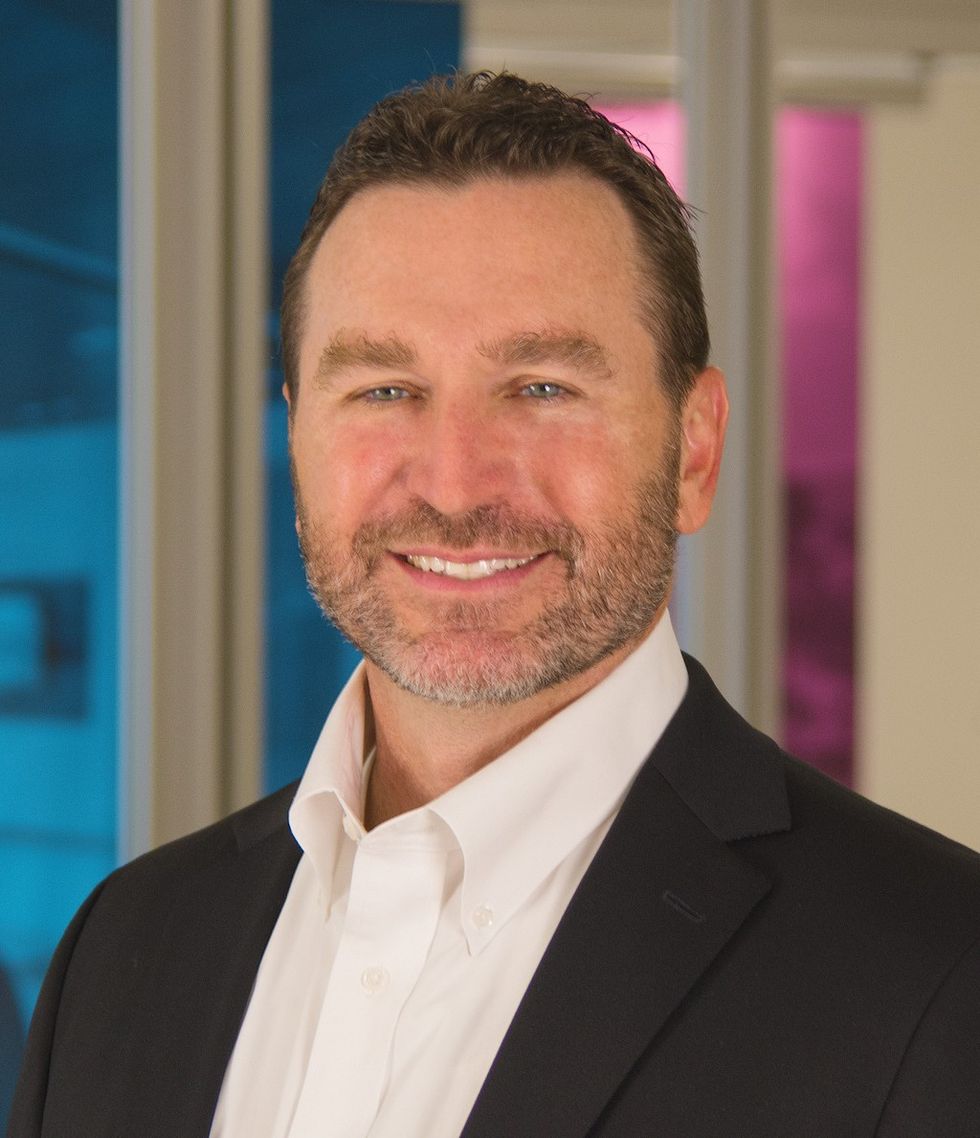
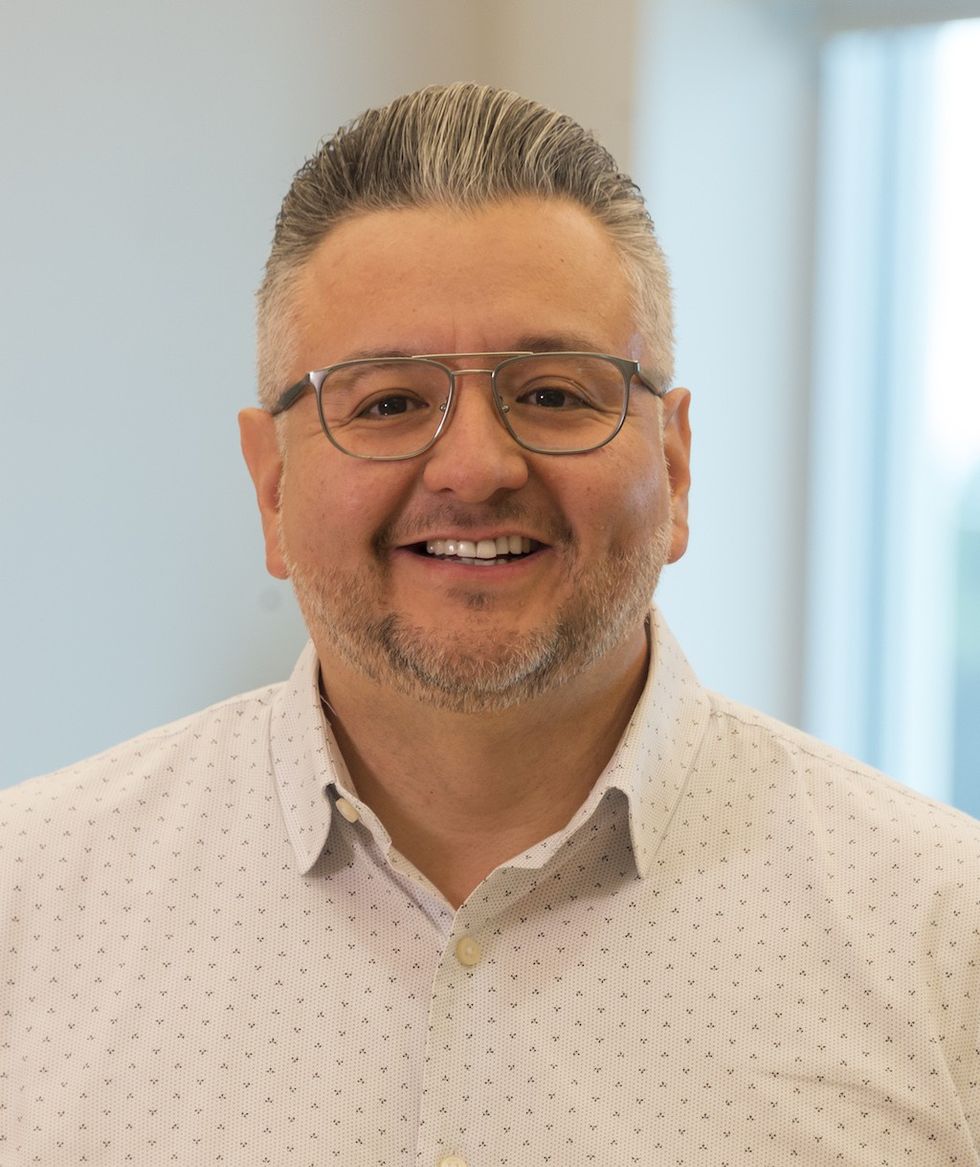


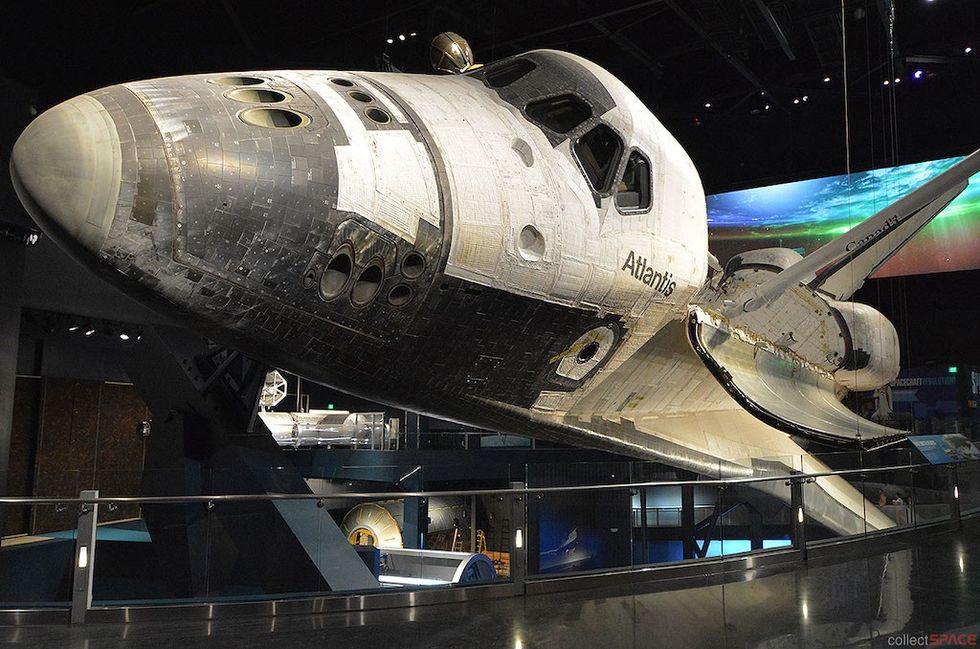
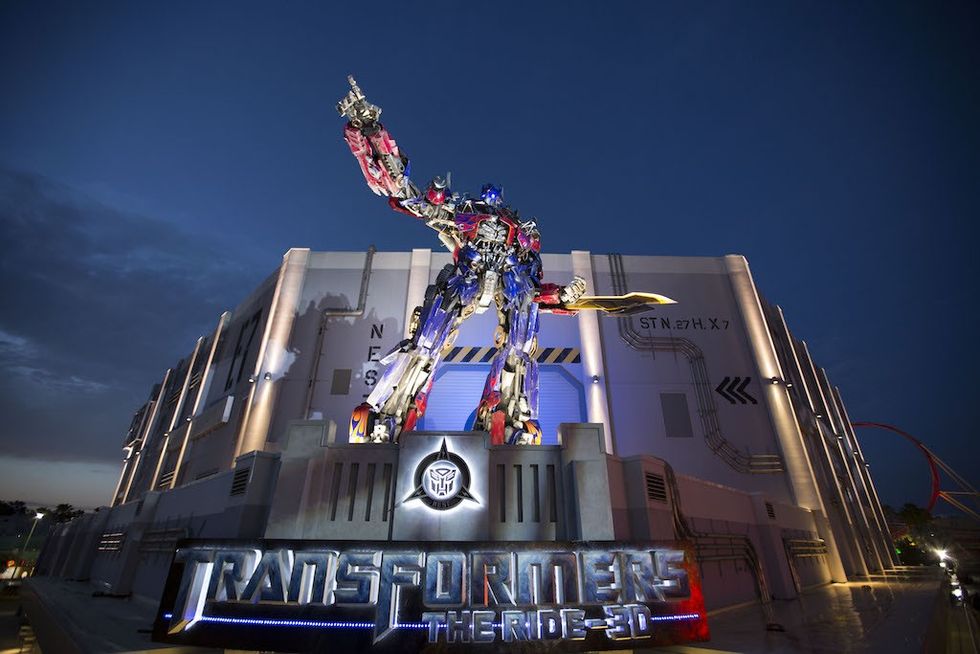
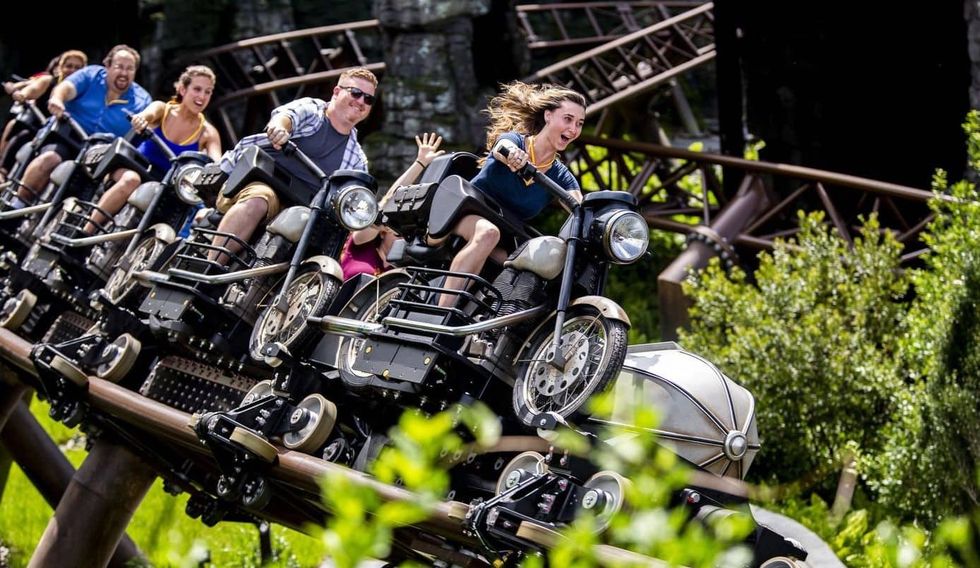
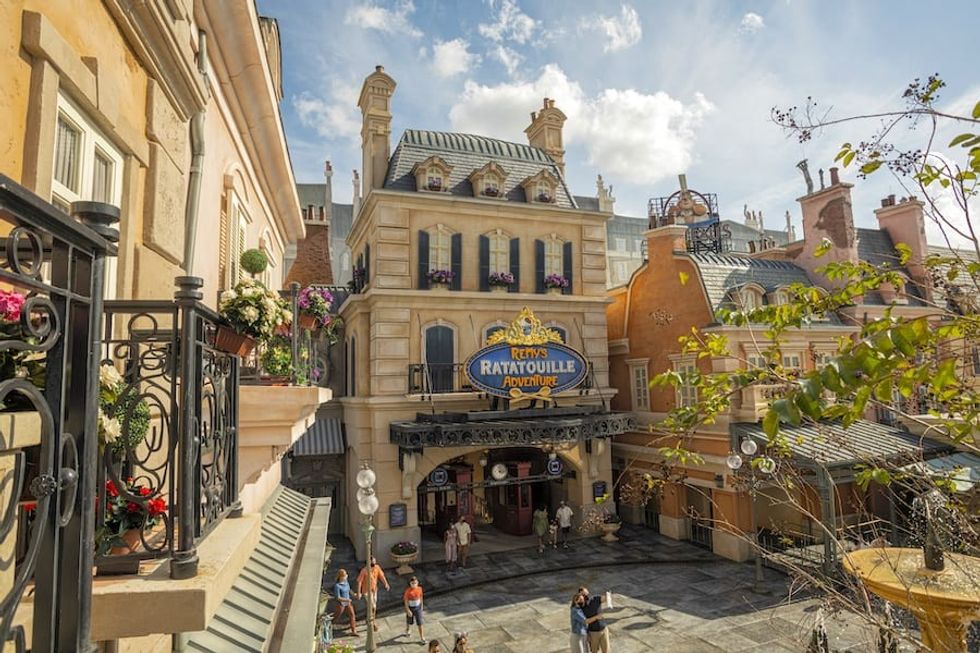
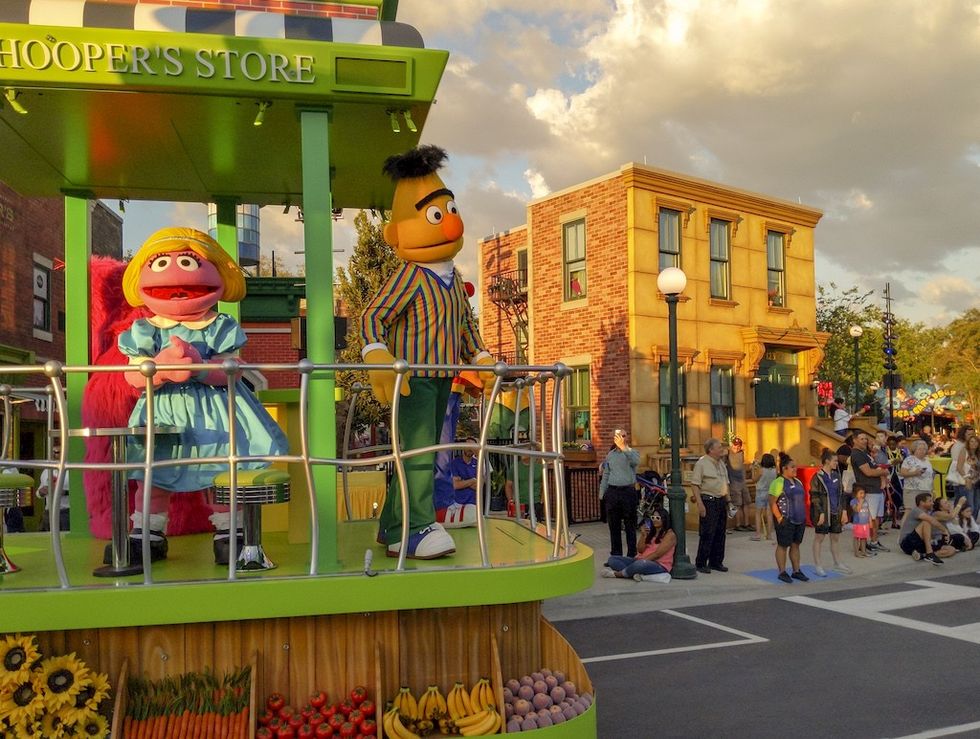
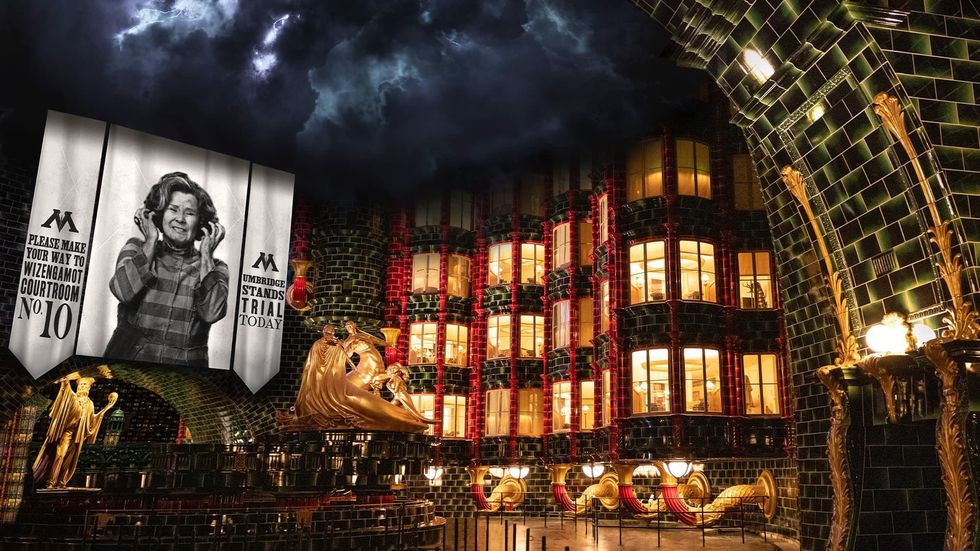
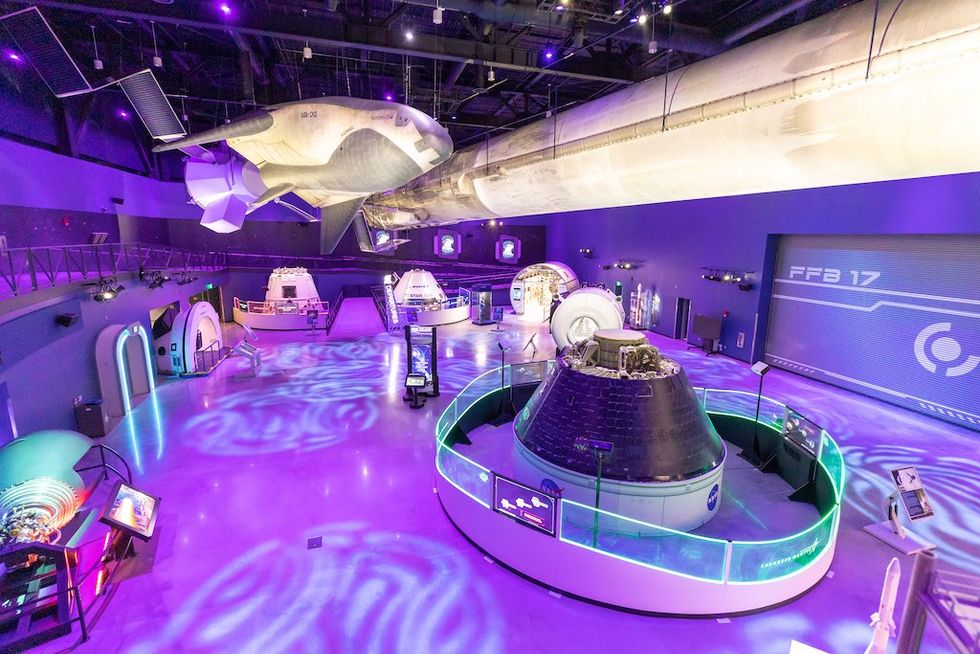
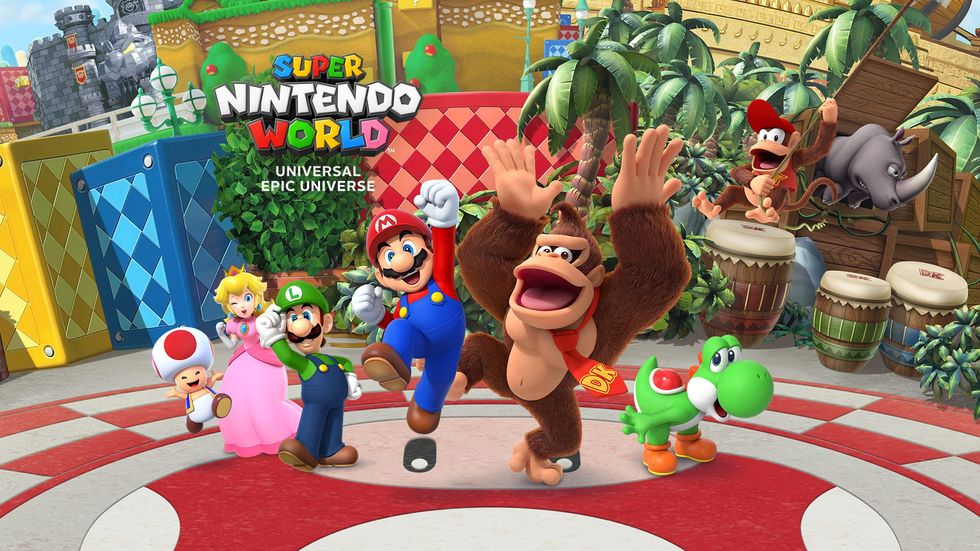
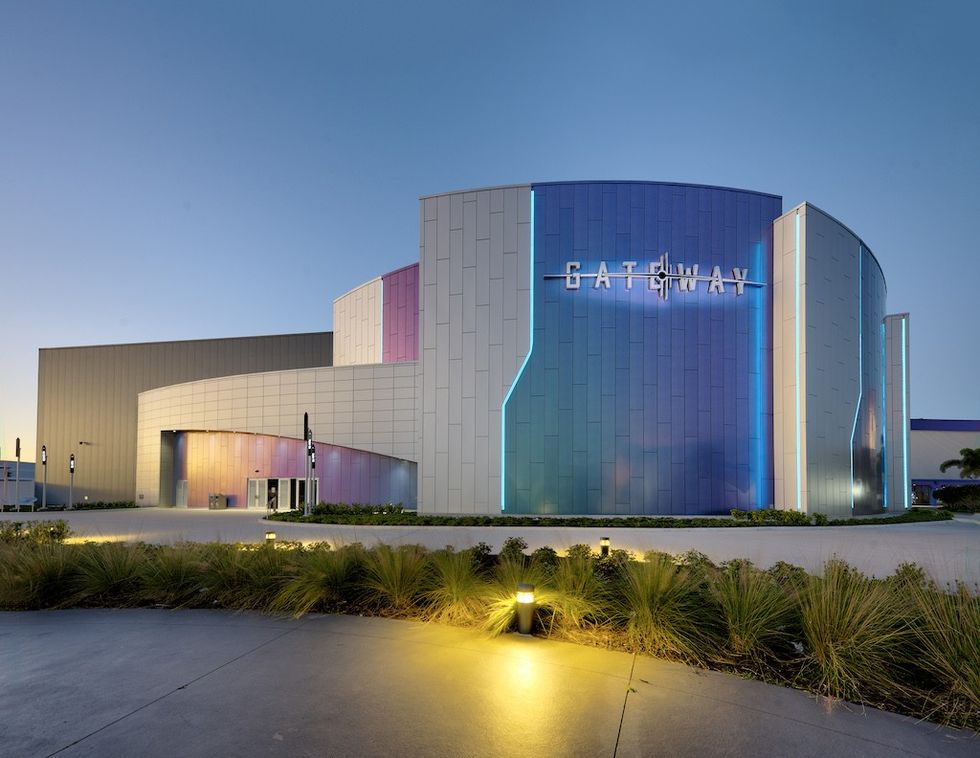

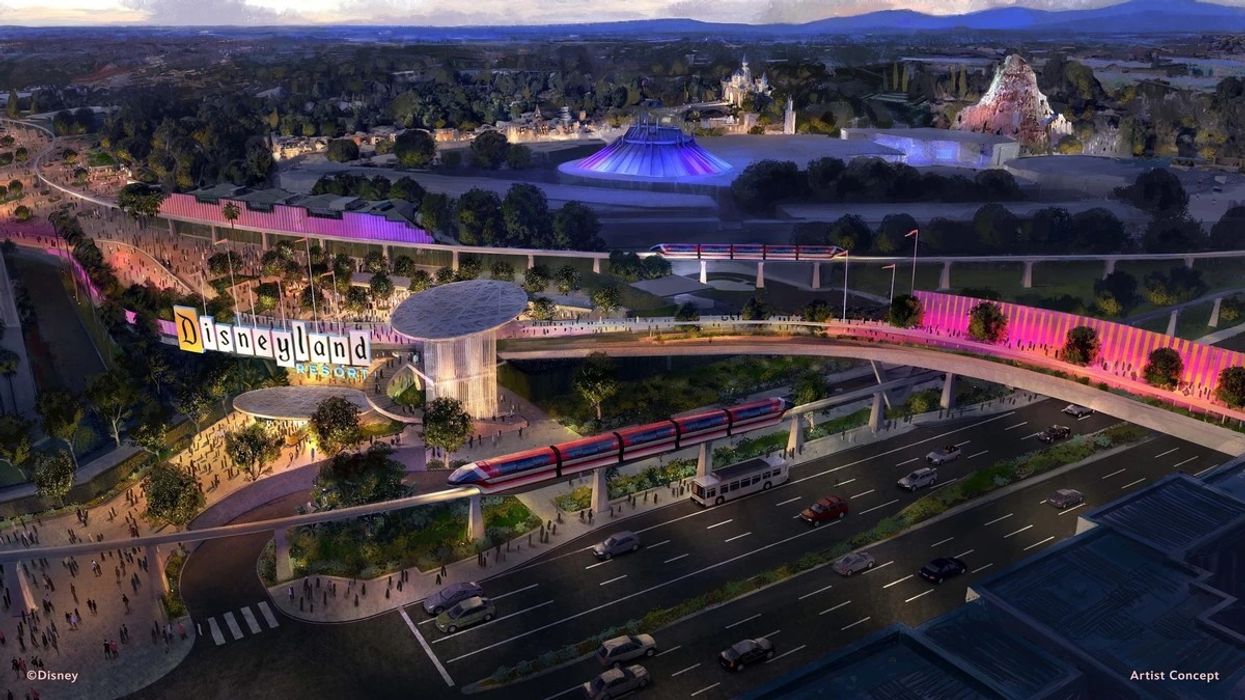

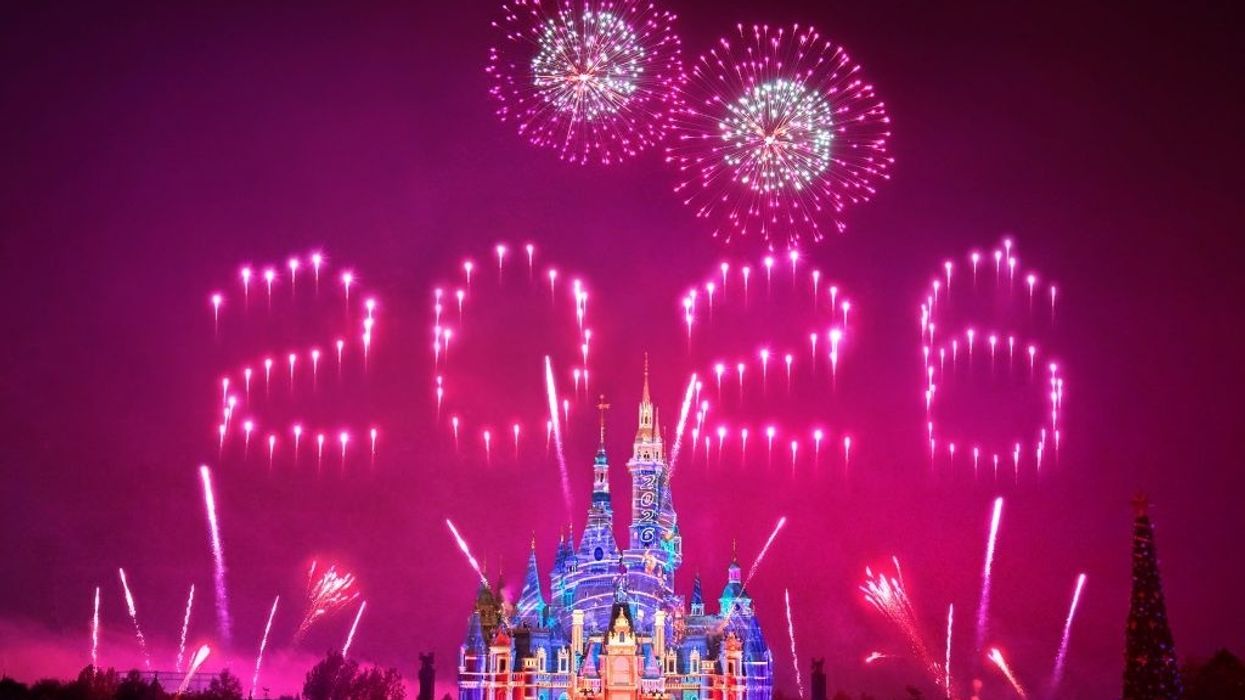
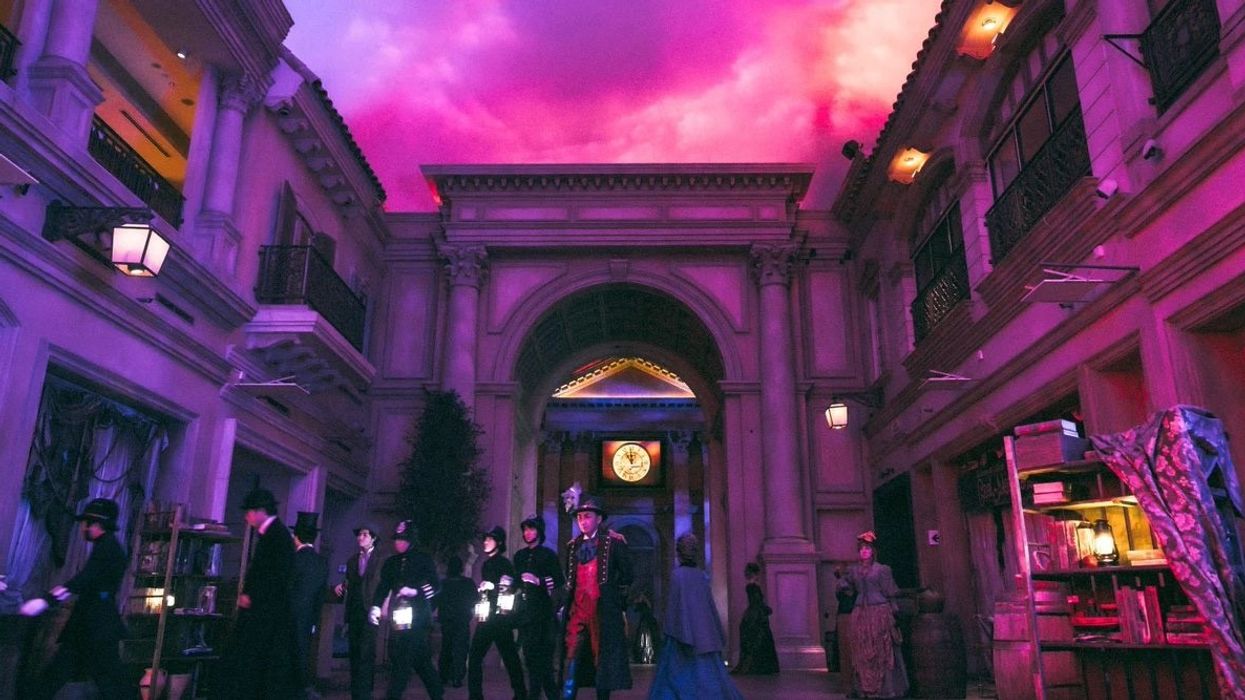
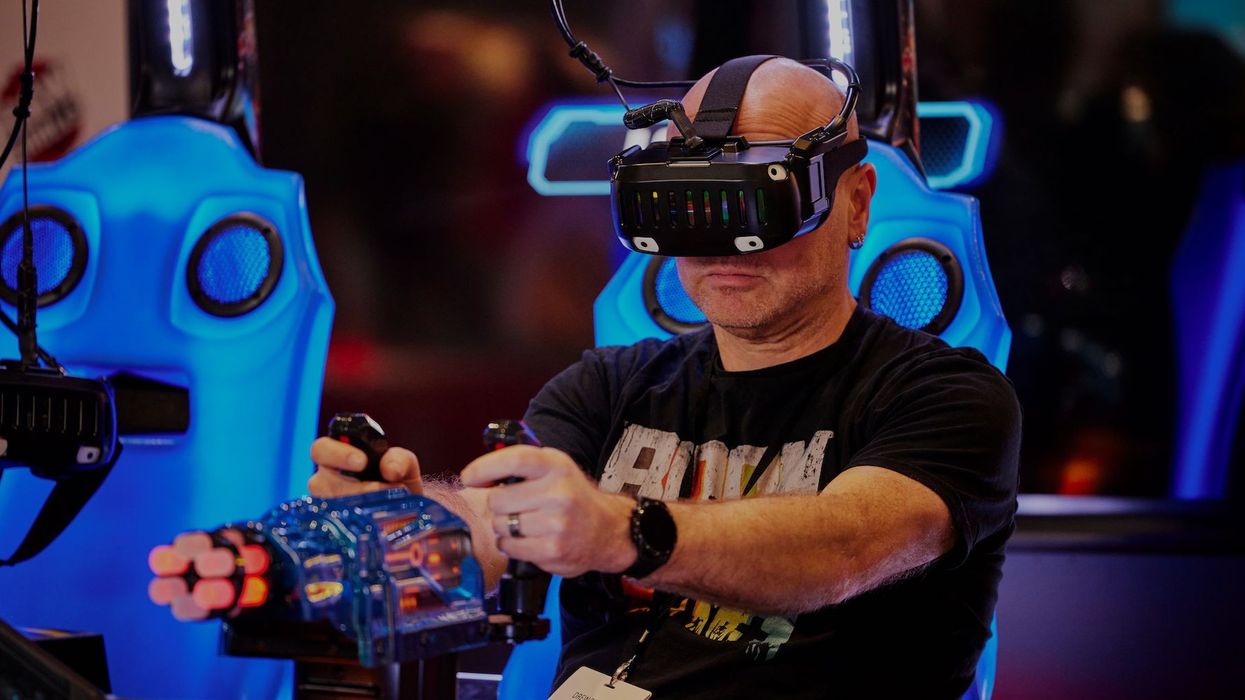
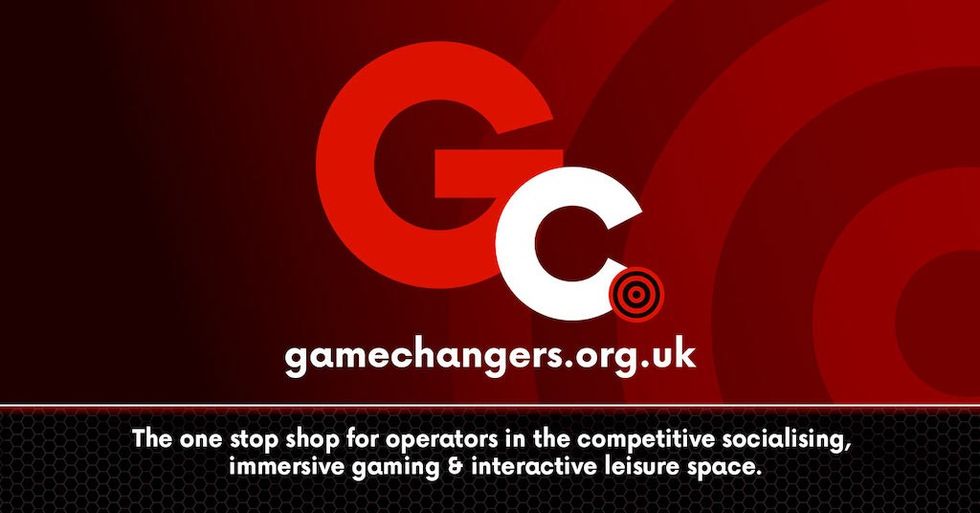
 Matt Eley and Sharon Dickinson
Matt Eley and Sharon Dickinson
 EAG Expo 2025
EAG Expo 2025
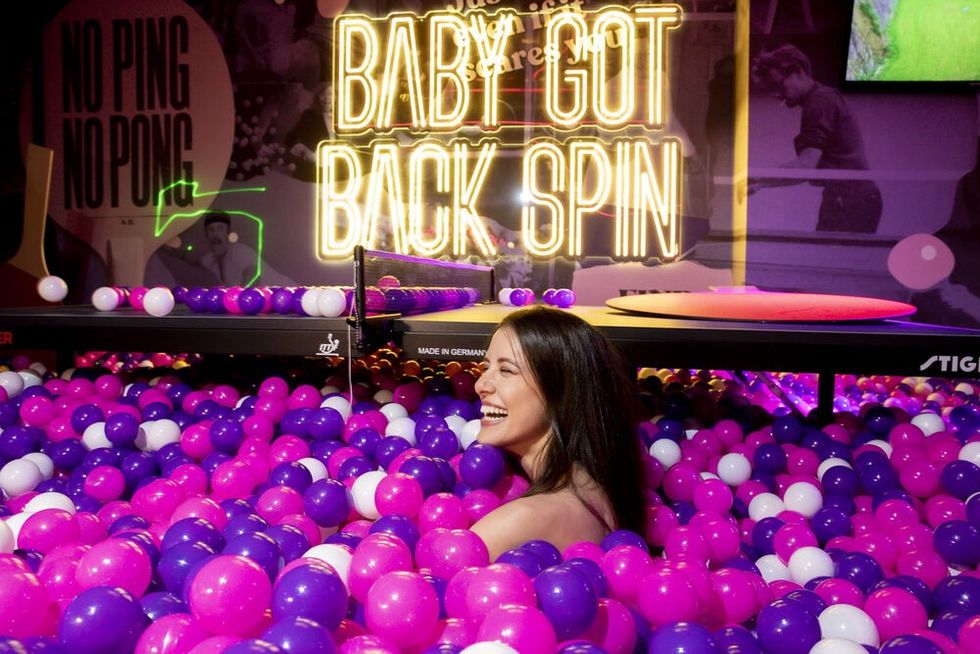 Ballers Clubhouse Carlton
Ballers Clubhouse Carlton 


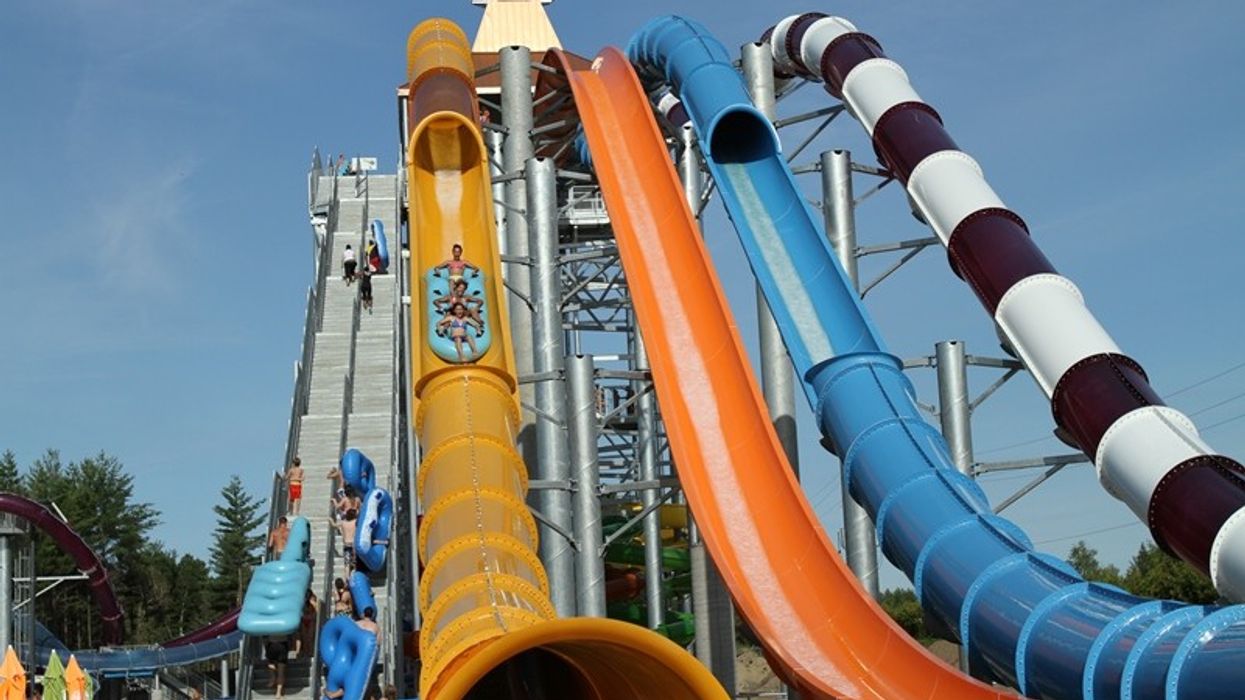
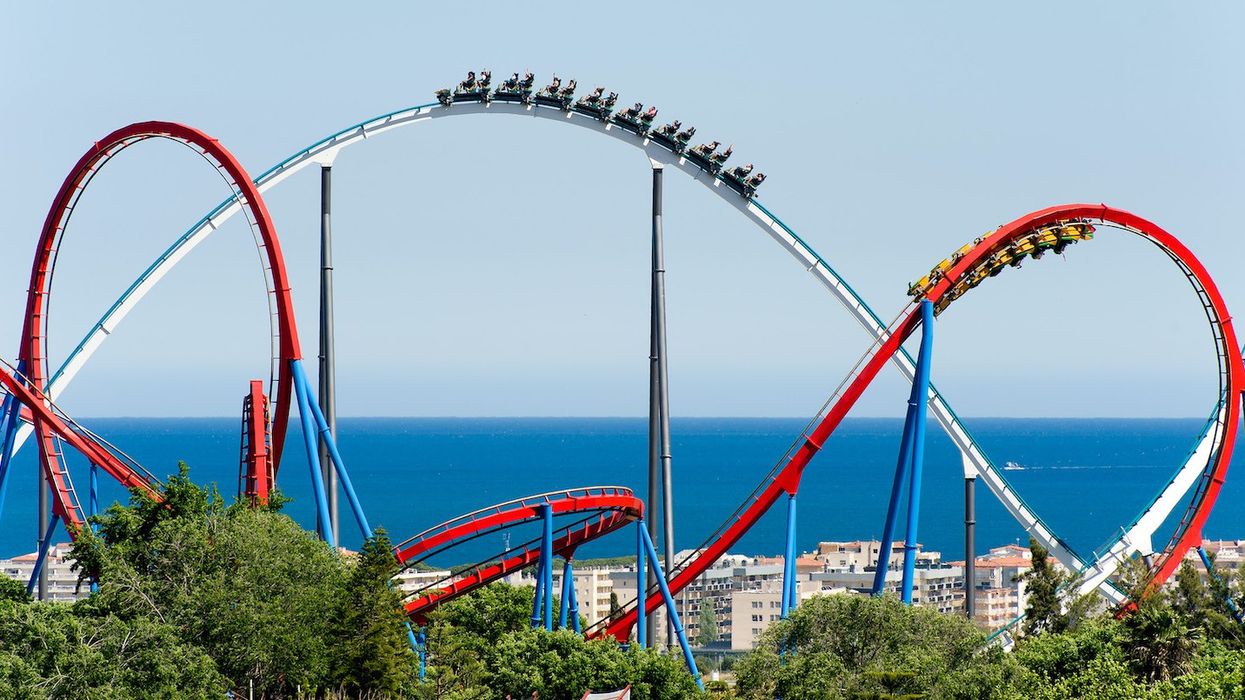


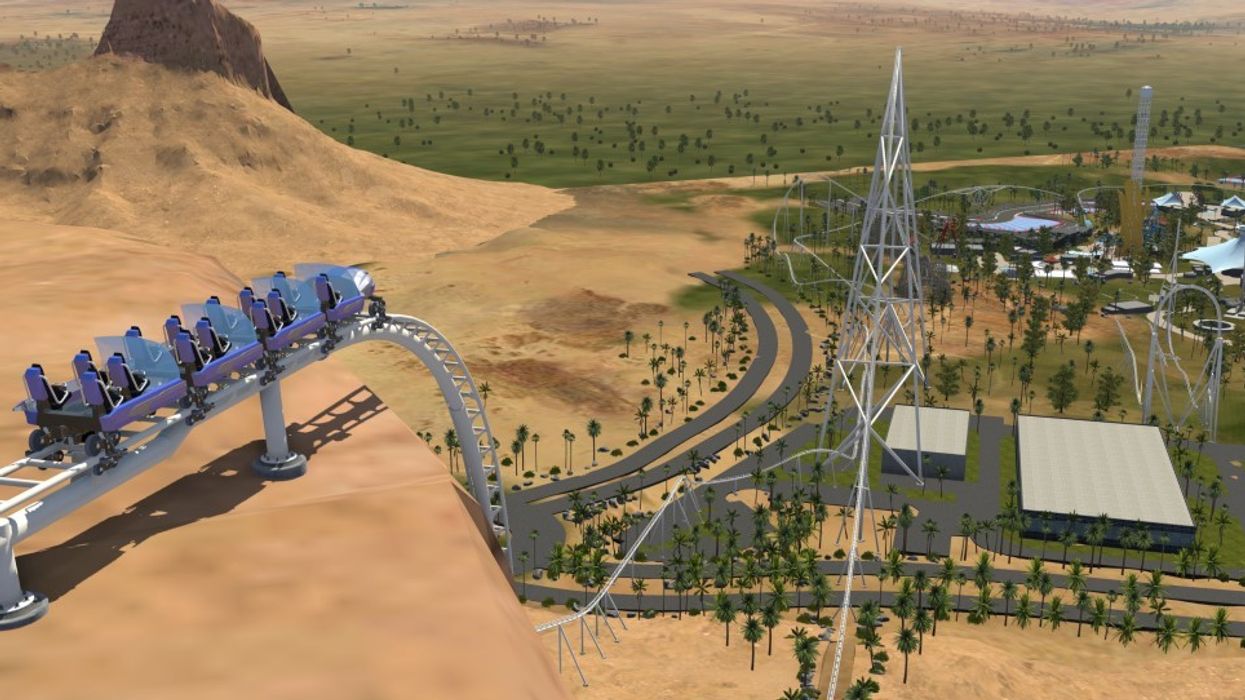


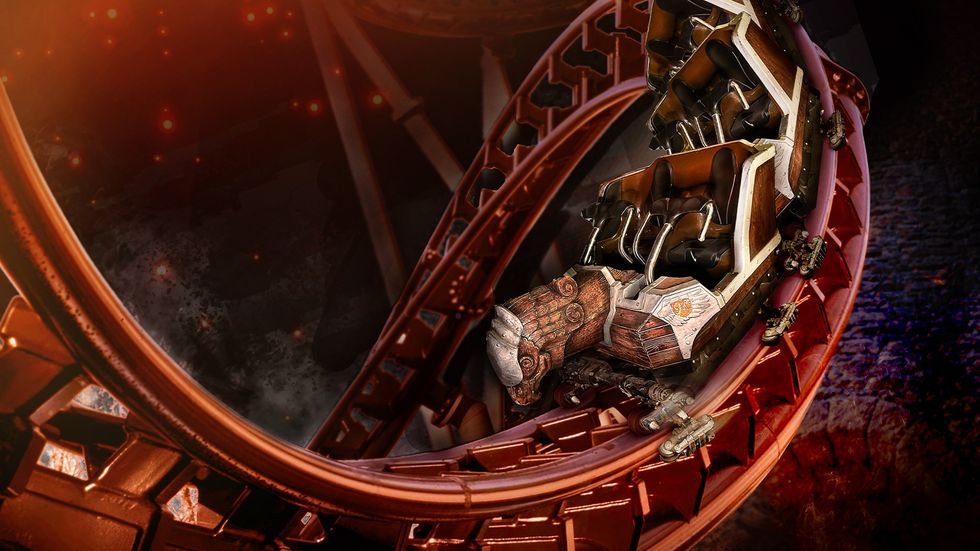


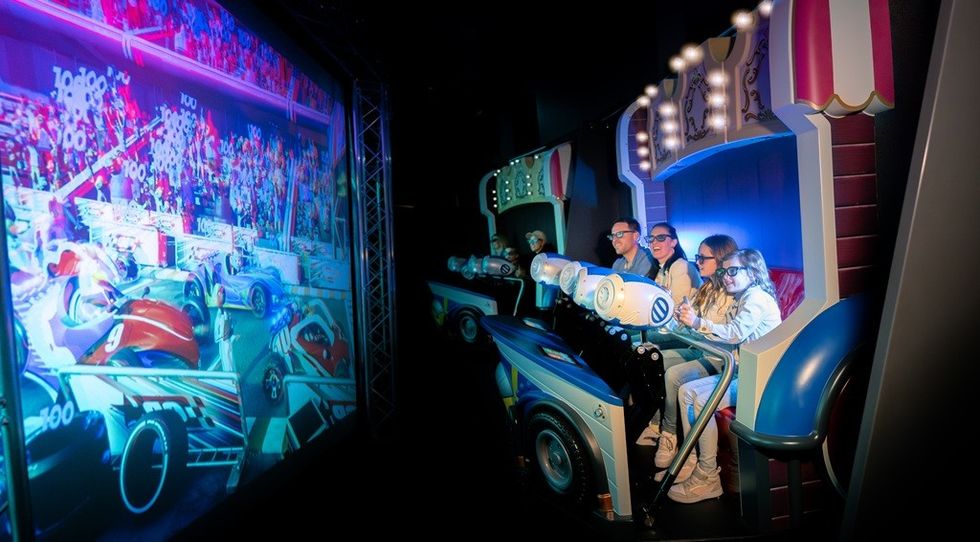

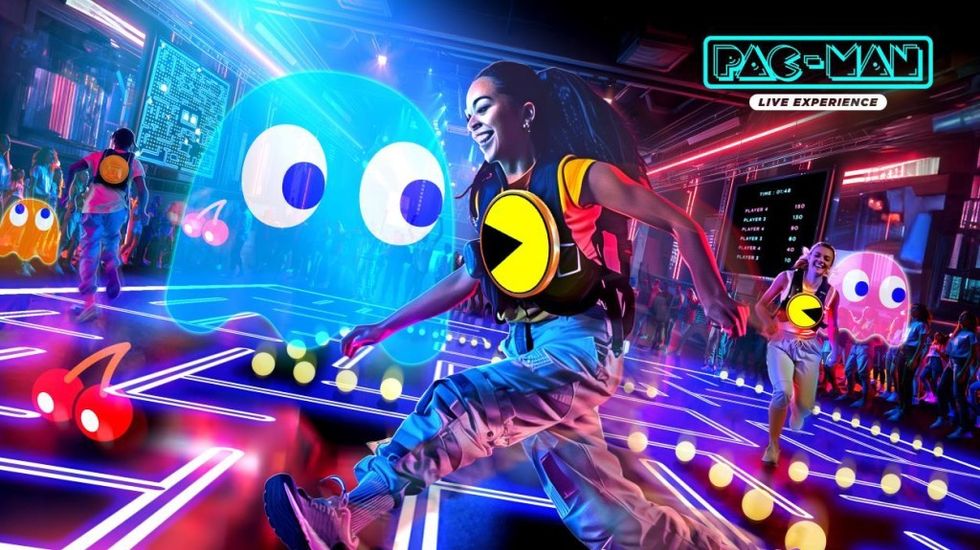
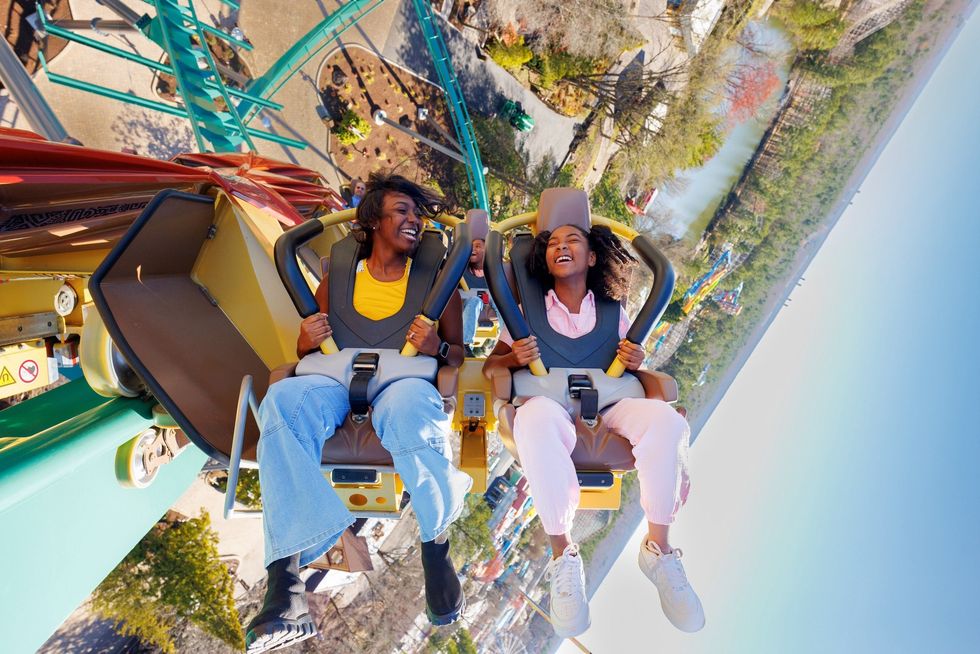
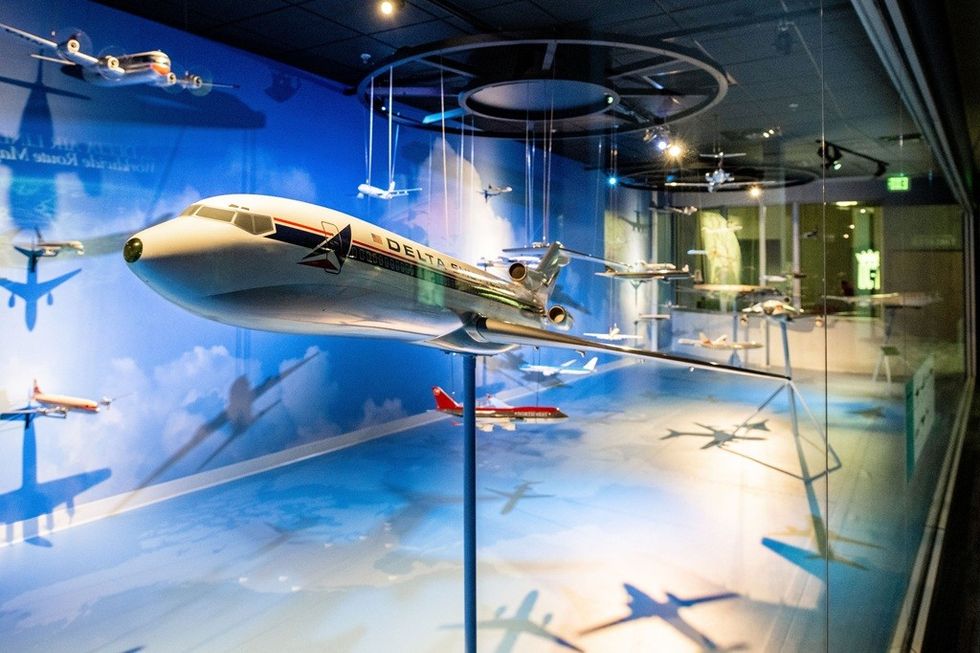 Exhibit at Delta Flight Museum courtesy of Rank Studios for Delta Flight Museum
Exhibit at Delta Flight Museum courtesy of Rank Studios for Delta Flight Museum 
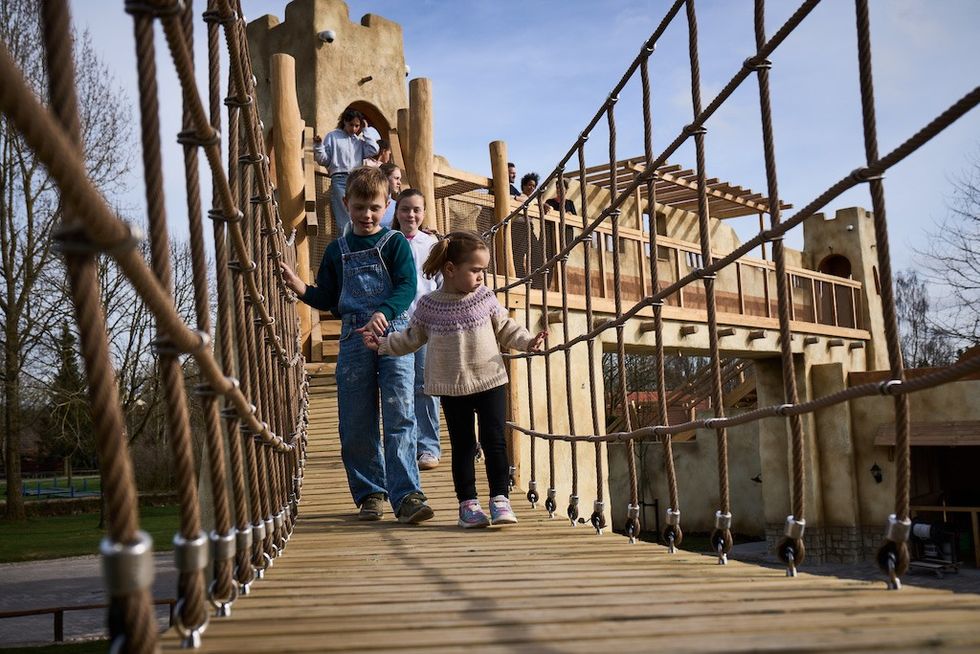



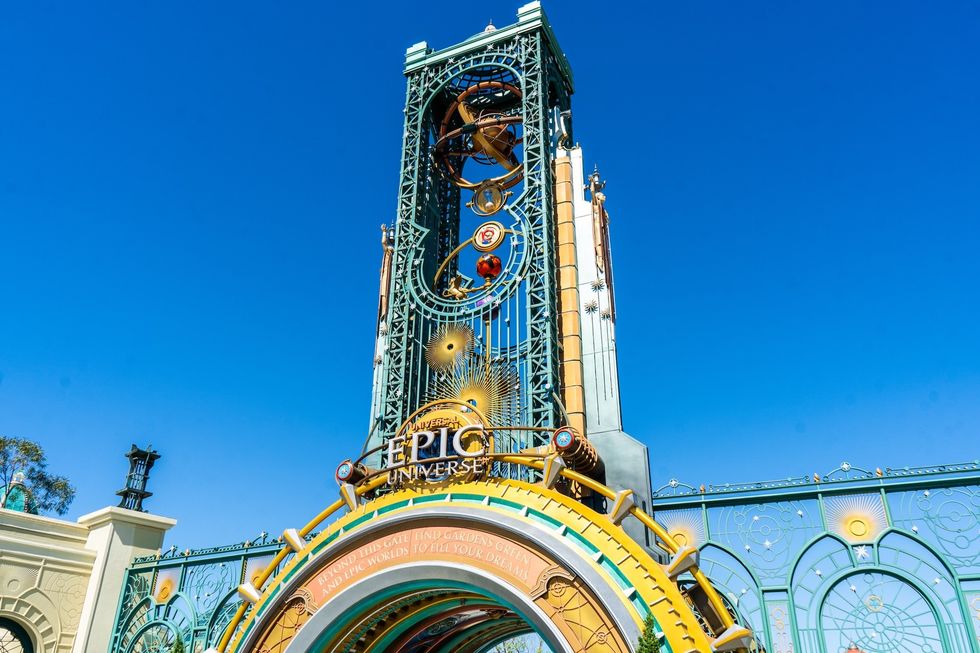
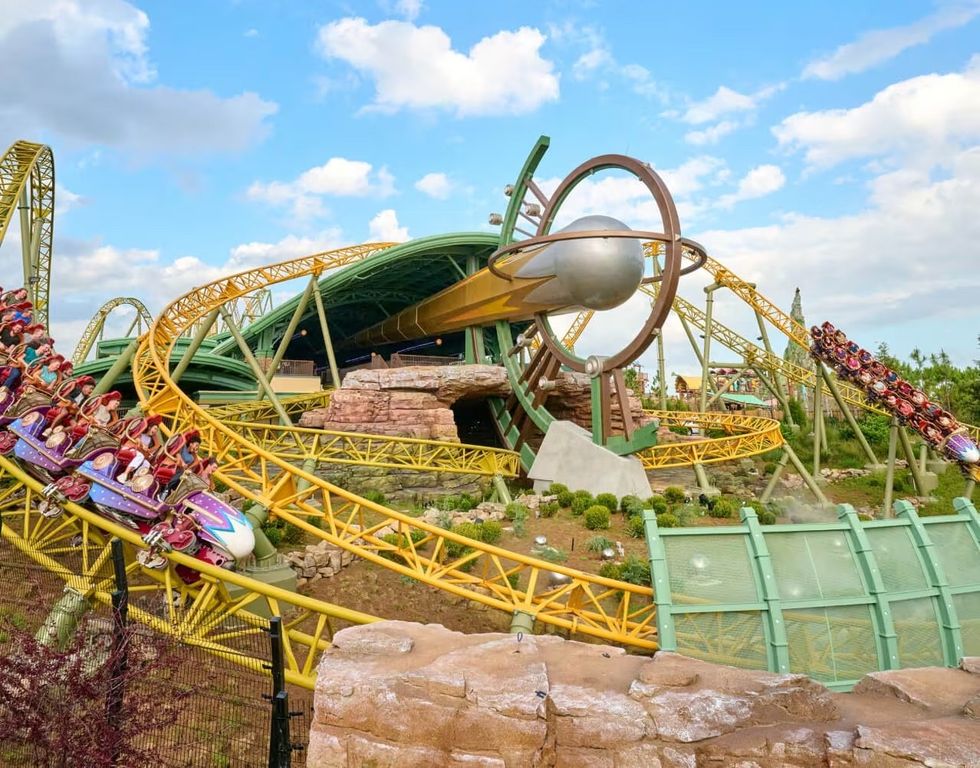
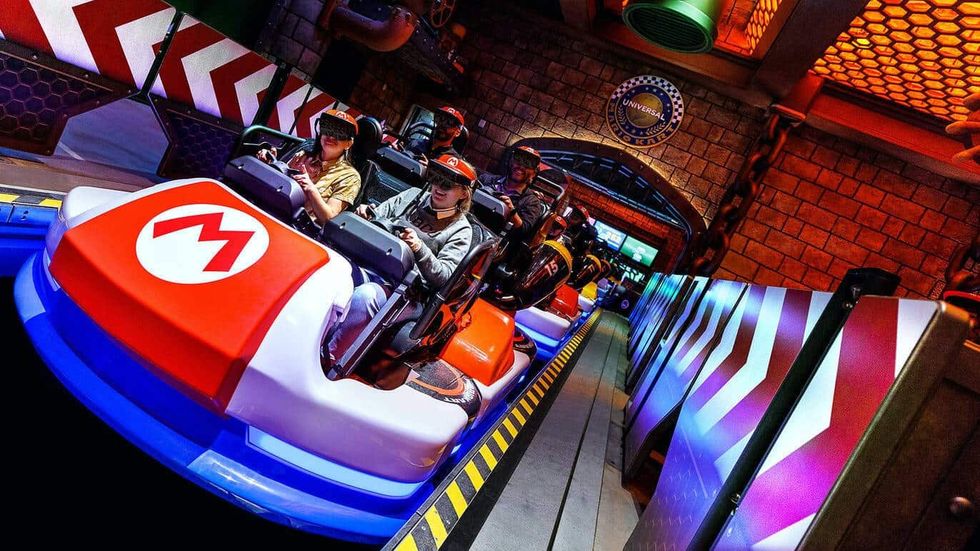


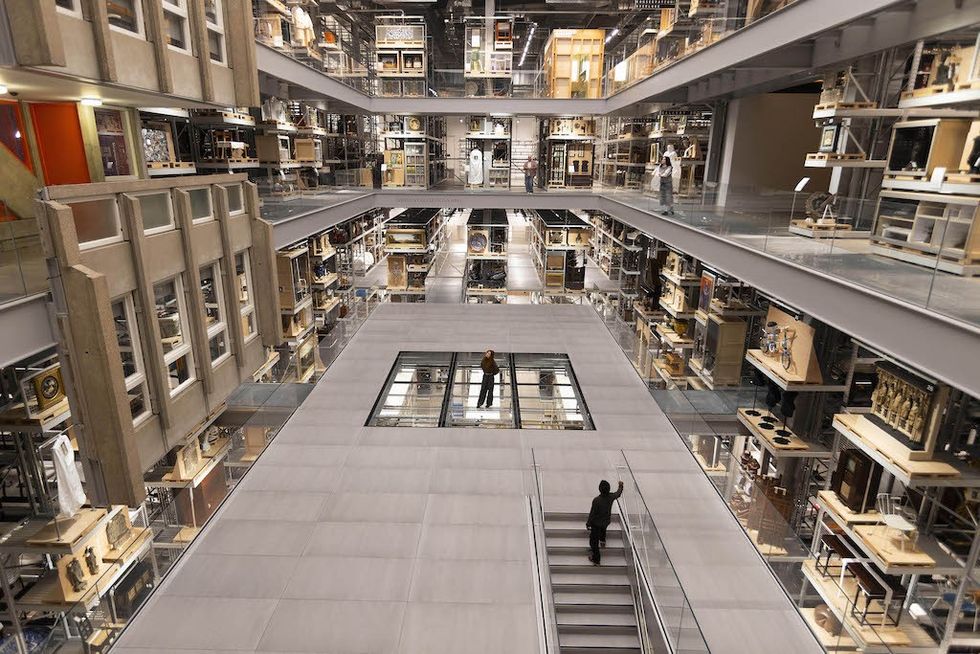 Image by David Parry, PA Media Assignments
Image by David Parry, PA Media Assignments 

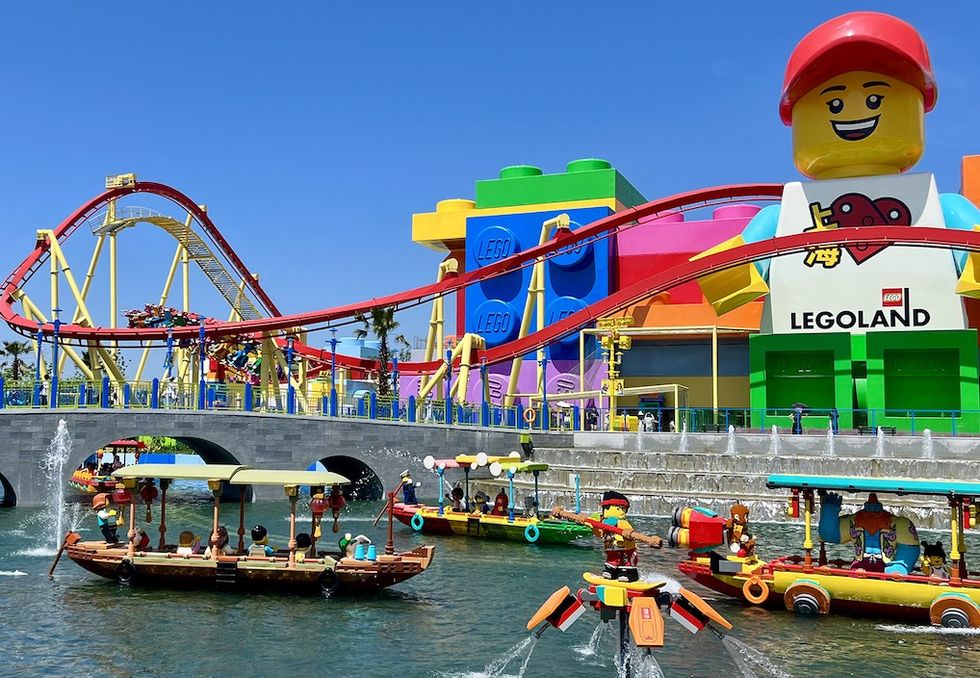
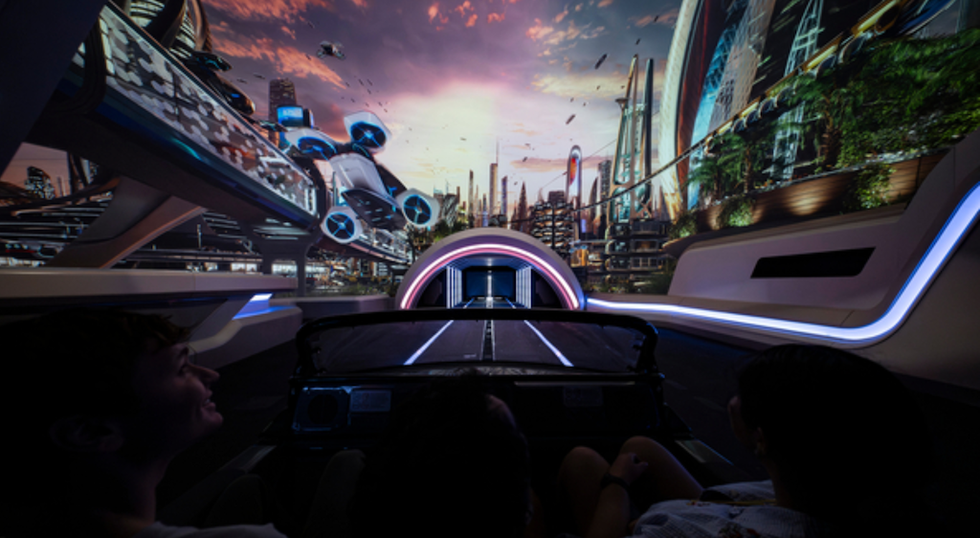 Image courtesy of Walt Disney World
Image courtesy of Walt Disney World
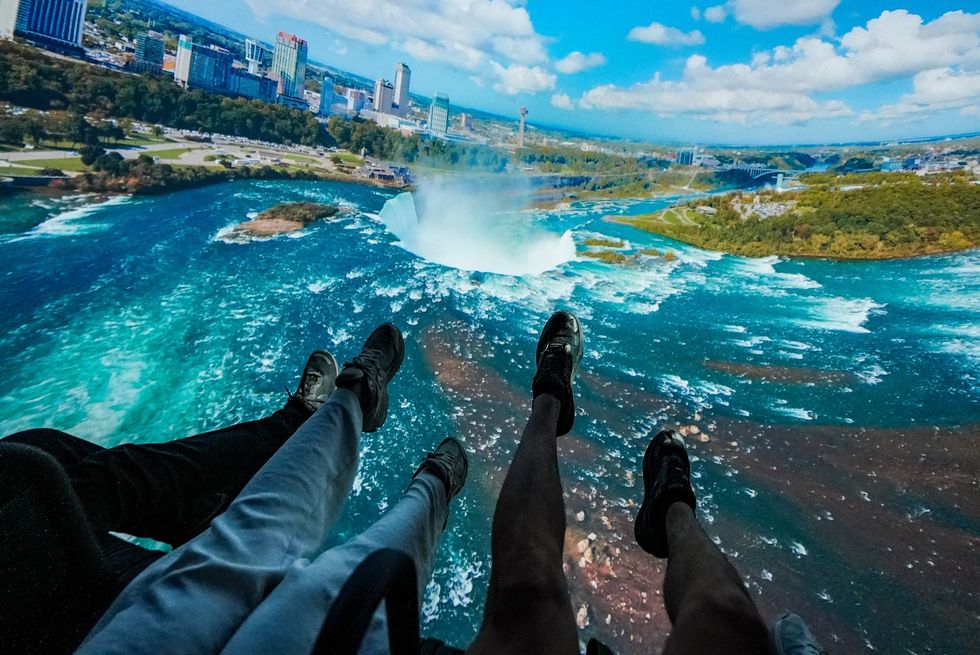
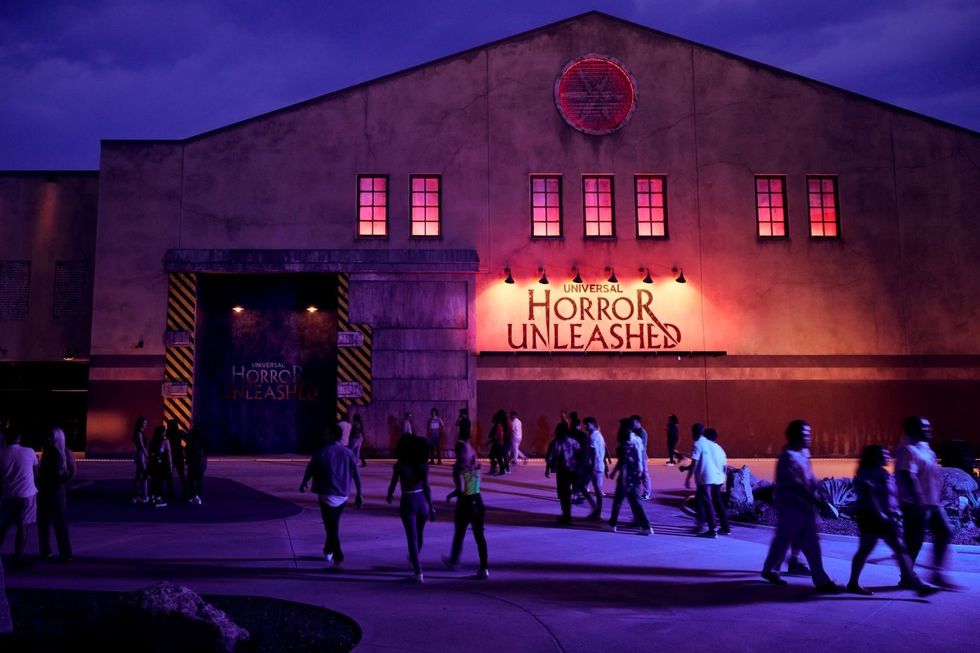
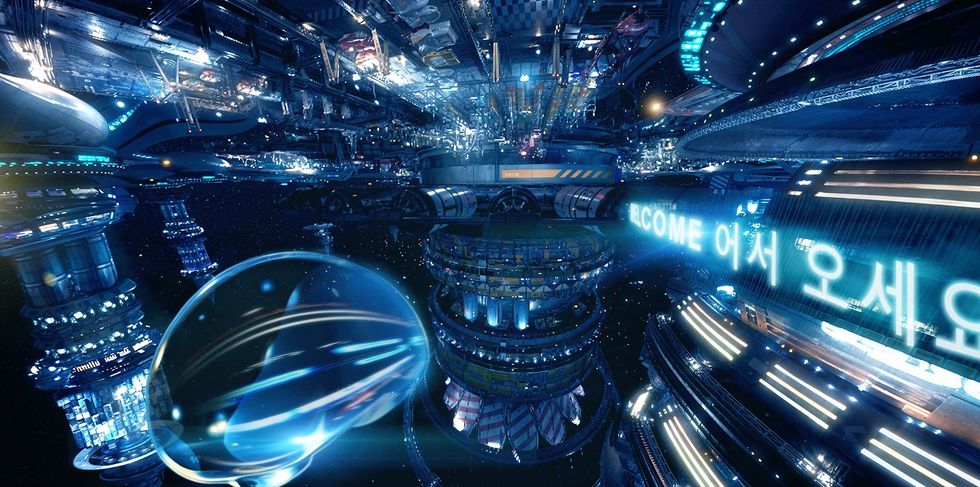


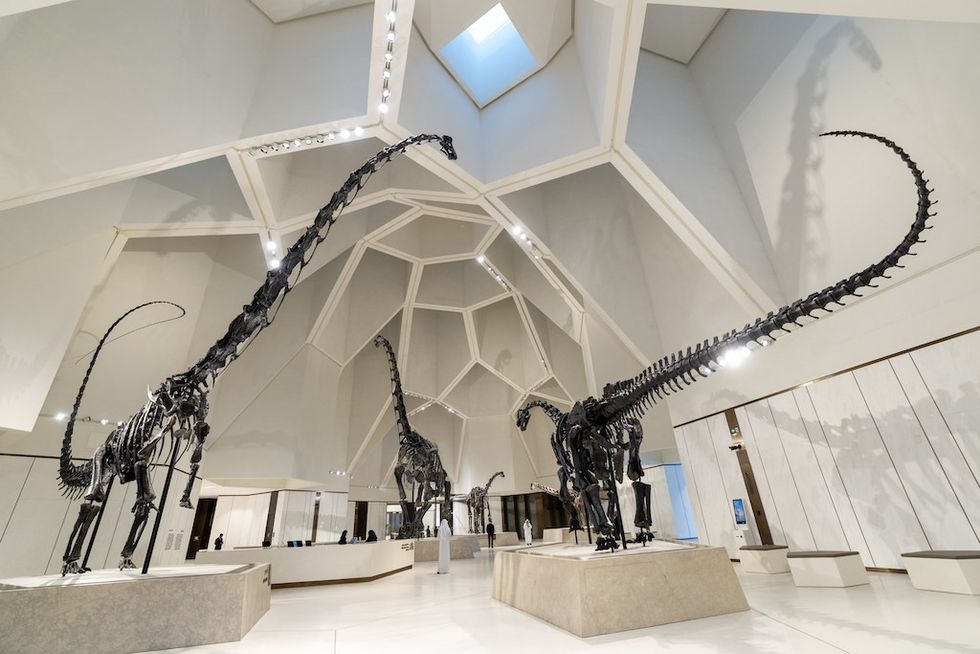
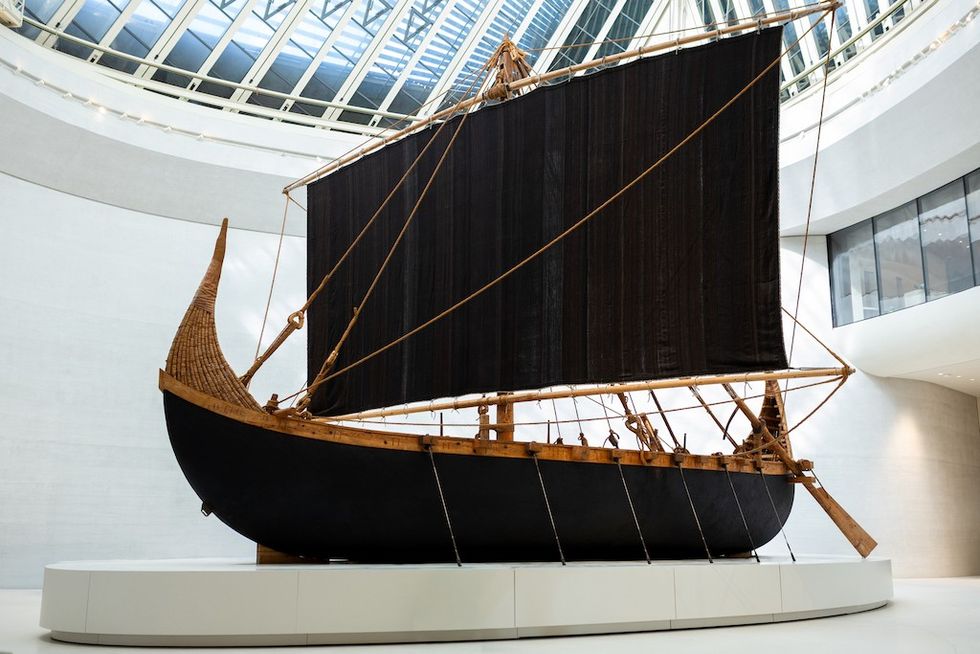

 TM Lim and Adam Wales
TM Lim and Adam Wales



 Toby Harris
Toby Harris Hijingo
Hijingo Flight Club, Washington D.C.
Flight Club, Washington D.C.
 Flight Club Philadelphia
Flight Club Philadelphia Flight Club Philadelphia
Flight Club Philadelphia Bounce
Bounce Hijingo
Hijingo Bounce
Bounce
 Fernando Eiroa
Fernando Eiroa







